2022 Activity Report
March Activity Report
26 March 2023
Global Japan Office Coordinator
KUBO Masako
Though it was chilly in the morning and the night, the temperature rose to almost 20 degrees Celsius during the day, and some young people even wore tank tops and sandals. Despite my worries such as ”Are they warm enough?” and “what will they wear in summer?”, they seemed completely unconcerned and were seen taking naps on the lawn. (Photo 1)
Well, it's probably time for a field trip in middle and high schools this month. A lot of middle and high school students came in groups to visit the cathedral in front of the literature department. They seemed to come mainly from England, Germany and France. There were also students from Japanese universities who came to study in Salamanca during the spring break, and I could feel the atmosphere of the spring break in Japan as I passed many Japanese people on the street. A group of students from Nanzan University joined in the International course and the short-term training at the Spanish-Japanese Cultural Center. Also, there were students who stayed for a short period as their preparations for long-term stay to study in Salamanca in advance.
In addition, Japan Week was held at the Spanish-Japanese Cultural Center for one week from March 13. There was a haiku competition, lectures on the theme of Dutch "O-Ine" and performances such as tea ceremony and Japanese drums, and both the Japanese students and the undergraduate students studying Japanese seemed to enjoy the event.
For the week from March 20, the Faculty of Literature held its own Japanese Culture Week. This year, more than ever before, the event was especially student-driven. With the slots for two events being held at the same time, the program content was full of ideas that were in keeping with the various interests of many of people. In particular, everyone seemed to put a lot of effort into games, karaoke, and cosplay, and their responses were great. Some of the games were ones that even Japanese people had never heard of, and I was happy to see how many experiences they had while studying in Japan and how much they "love Japan," and I made many discoveries about the students' activities that I could not see in class. It was a week in which I was able to reconfirm the importance of such events as a place where students can demonstrate their strong desire to do what they want to do and teach others what they learned, as well as a place where classmates can deepen their bonds. (Photos 2, 3, 4, 5)
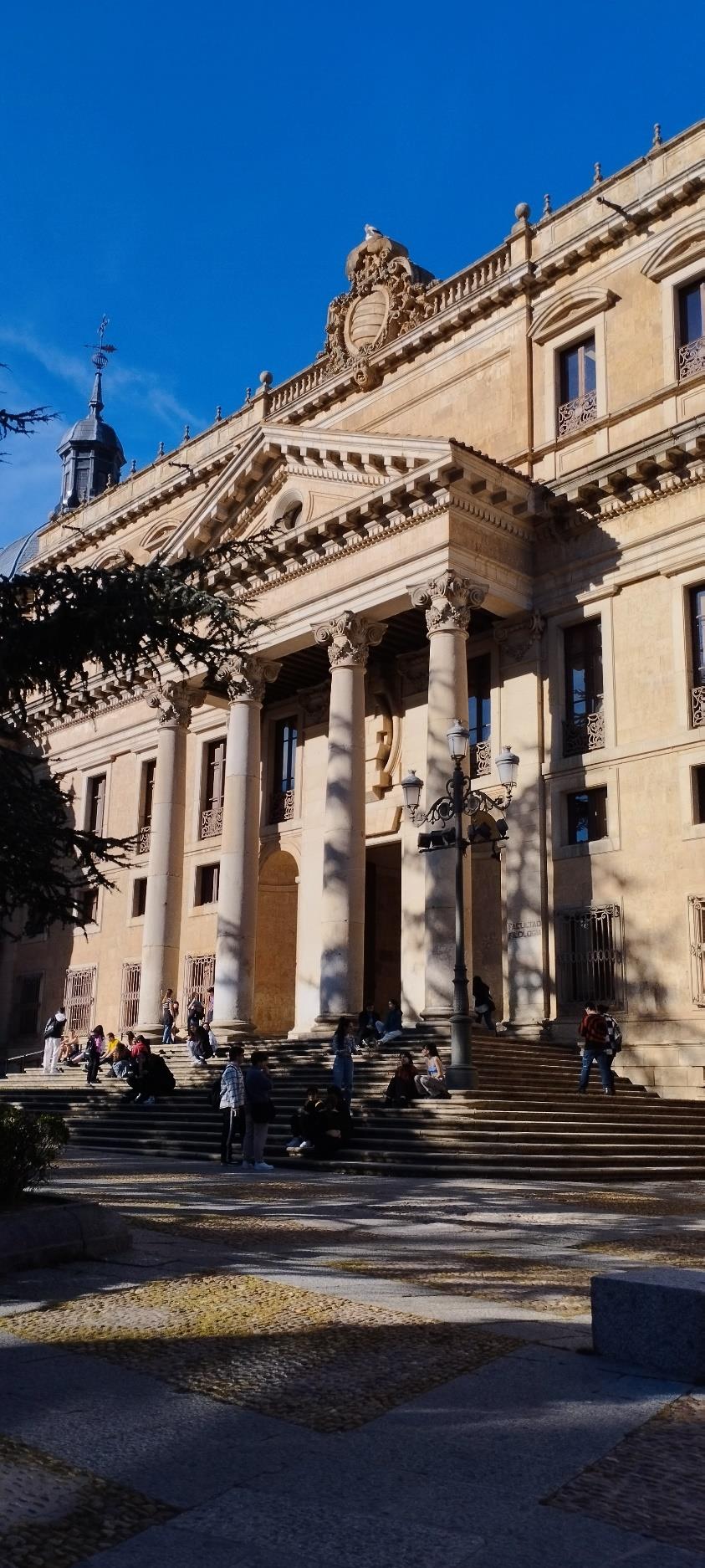
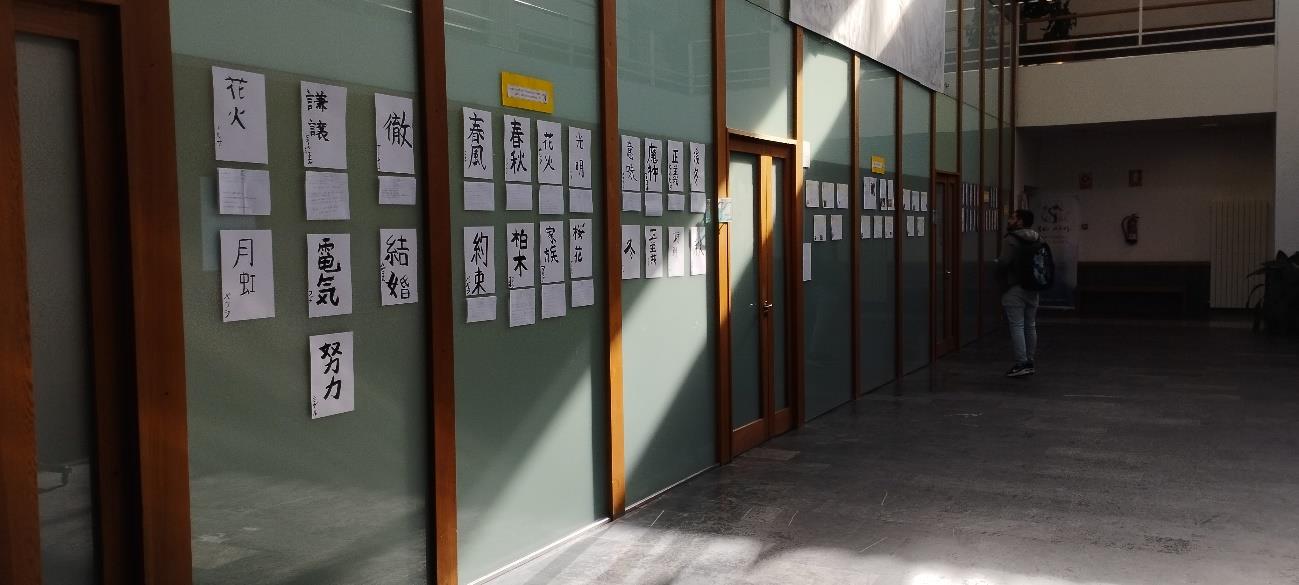
(Photo 2)Students’ works (calligraphy, cooking recipes, Senryu )
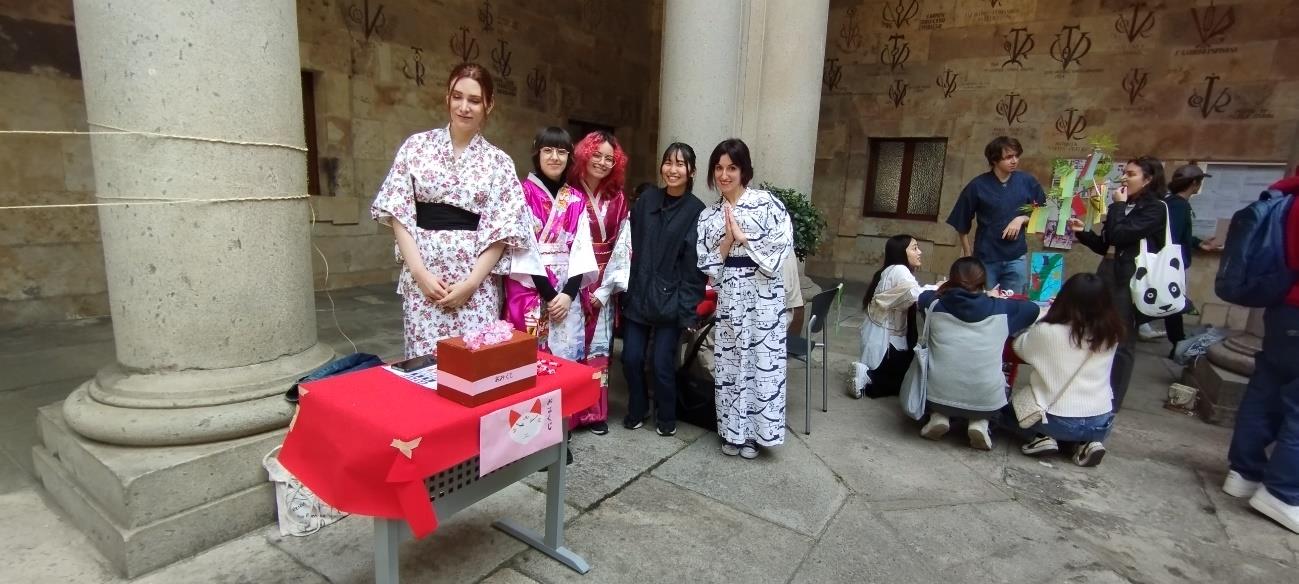
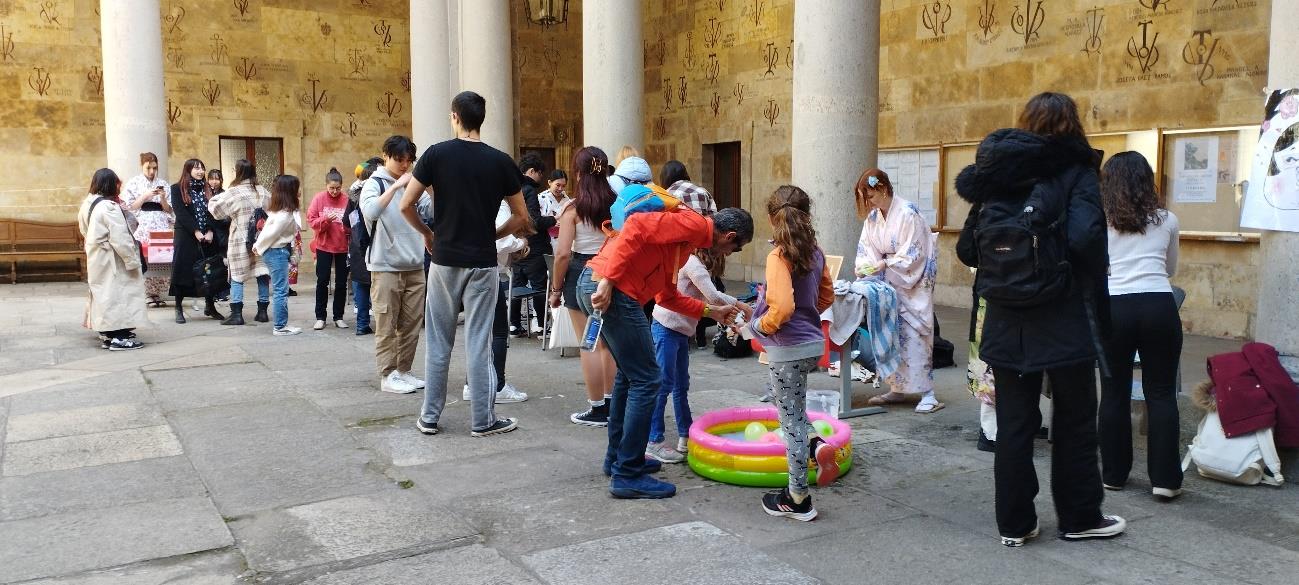
(Photo 3 and 4)The eight exhibits were held in the faculty courtyard andwere open to the public.
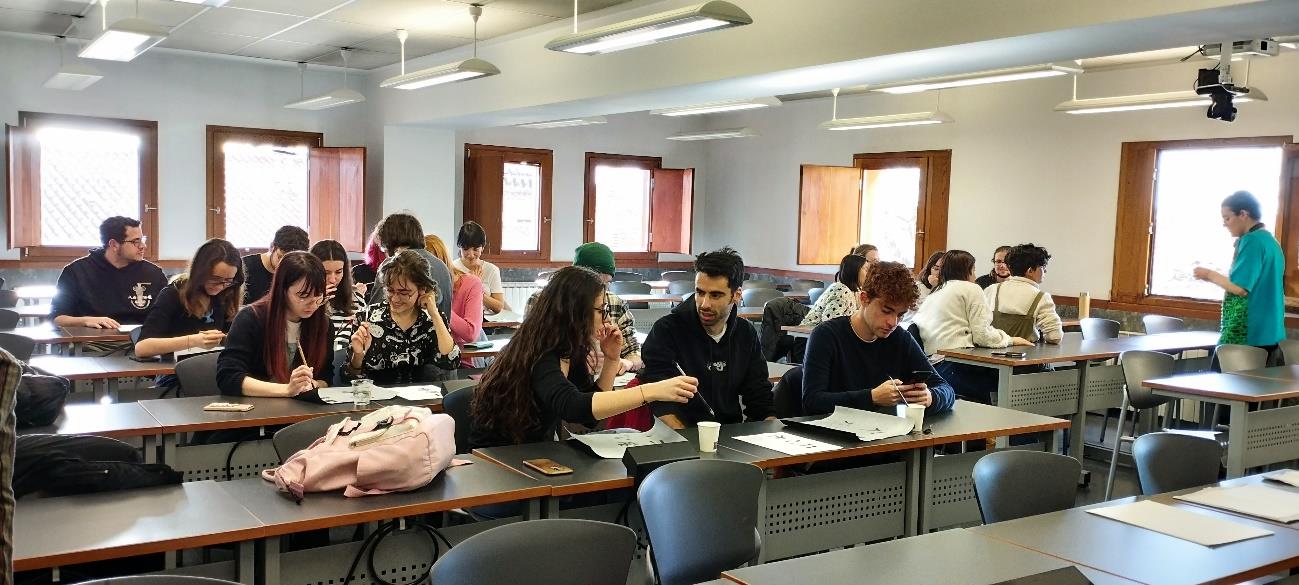
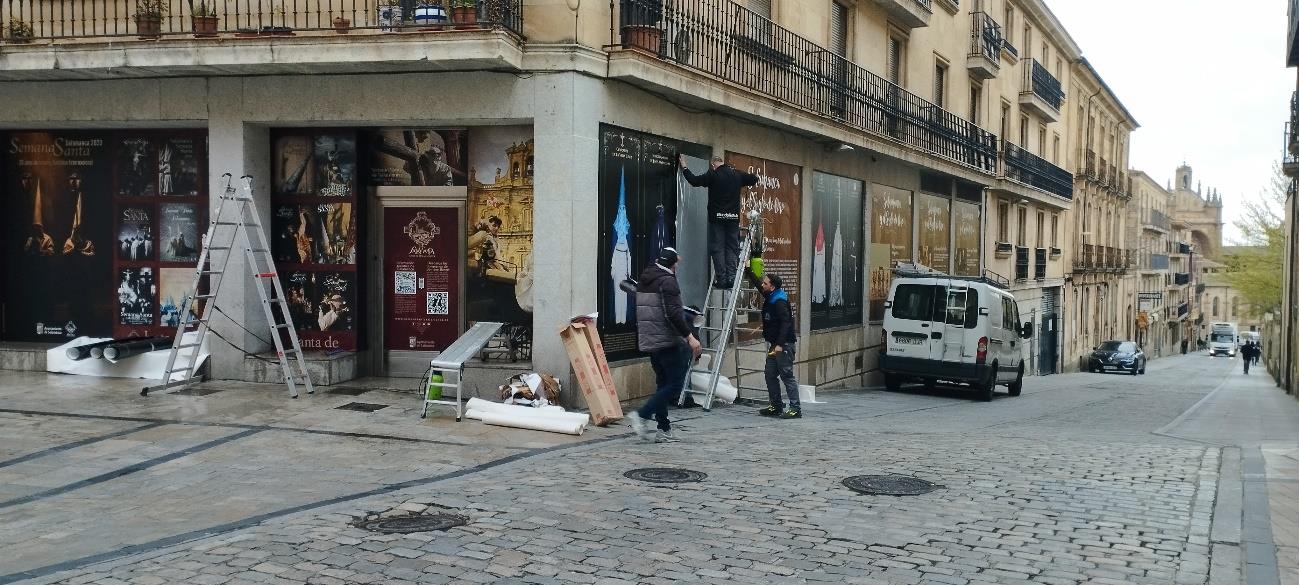
February Activity Report
28 February 2023
Global Japan Office Coordinator
KUBO Masako
As soon as February started, the arrival of spring was quickly felt in the days that followed. In these nice atmosphere, many International students from Japan has arrived to attend the classes in the second semester in Salamanca. Most of International students studied here for one year before, but after the Covid-19, it seems that many students study here for six months. The University of Salamanca has faculties and campuses scattered throughout the city, and even though it is a small town, it is no exaggeration to say that the entire city is the University of Salamanca. The offices are not all in one place, so it would be quite complicated for a first-time visitor. Because of the location where tourists are also visiting, many people seem to get the impression that they are not on campus. The supports for International students are not as sufficient as in Japan, so there are not a few students saying, "I don't even know where to go and what to do.”
As for the classes, it seems that International students usually take as many different classes as they can between the faculties. They seems to get some information from their seniors and Spanish students on which classes are recommended, and carefully prepare their study plan for the period of their study abroad. I was reminded once again that when they begin their study abroad experience in this way, they really start to make use of all kinds of strategies naturally.
We started to hold the language exchange meeting. This time we targeted fourth-year students, but some third-year students and master's students are also mixed in, and we have the meetings weekly. I think the largest number of students, both students who study Japanese and International students from Japan, ever participated. In fact, we were warned because we were excited and too immersed to have the conversation, but the way everyone talked so hard and couldn’t stop talking showed me that this was one of the reasons to study languages. (Photo1)
In the middle of February, the flowers of almond bloomed. Just when we thought it was no surprise because the weather has been so nice, we were hit by a huge cold wave right after the flowers bloomed, and the cold days returned to winter. I heard from one Japanese person that it reminded the harsh winter in Hokkaido. By this cold wave which made it snow in Morocco, the Cathedral which was seen from the faculty was covered with snow in no time. I guess it was quite rare to see the entire landscape of snow. (Photo 2).
Students who study here for one year also have half a year left. There may be something good and bad, but if you are even aware of it, I am sure that the next six months will be fully filled with a variety of experiences
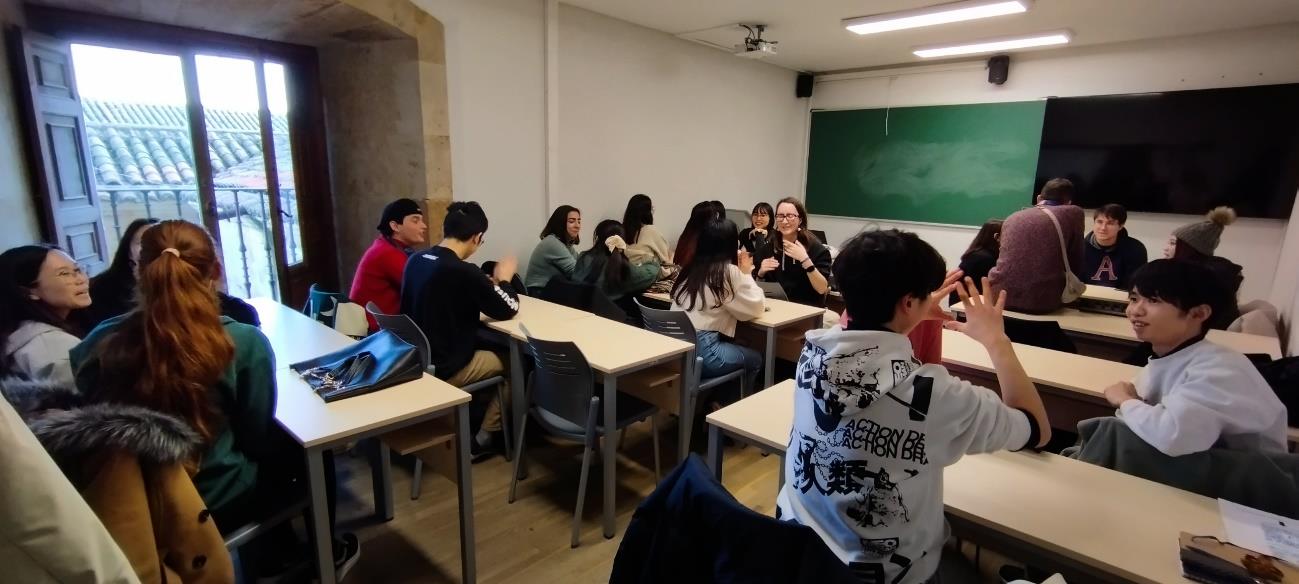
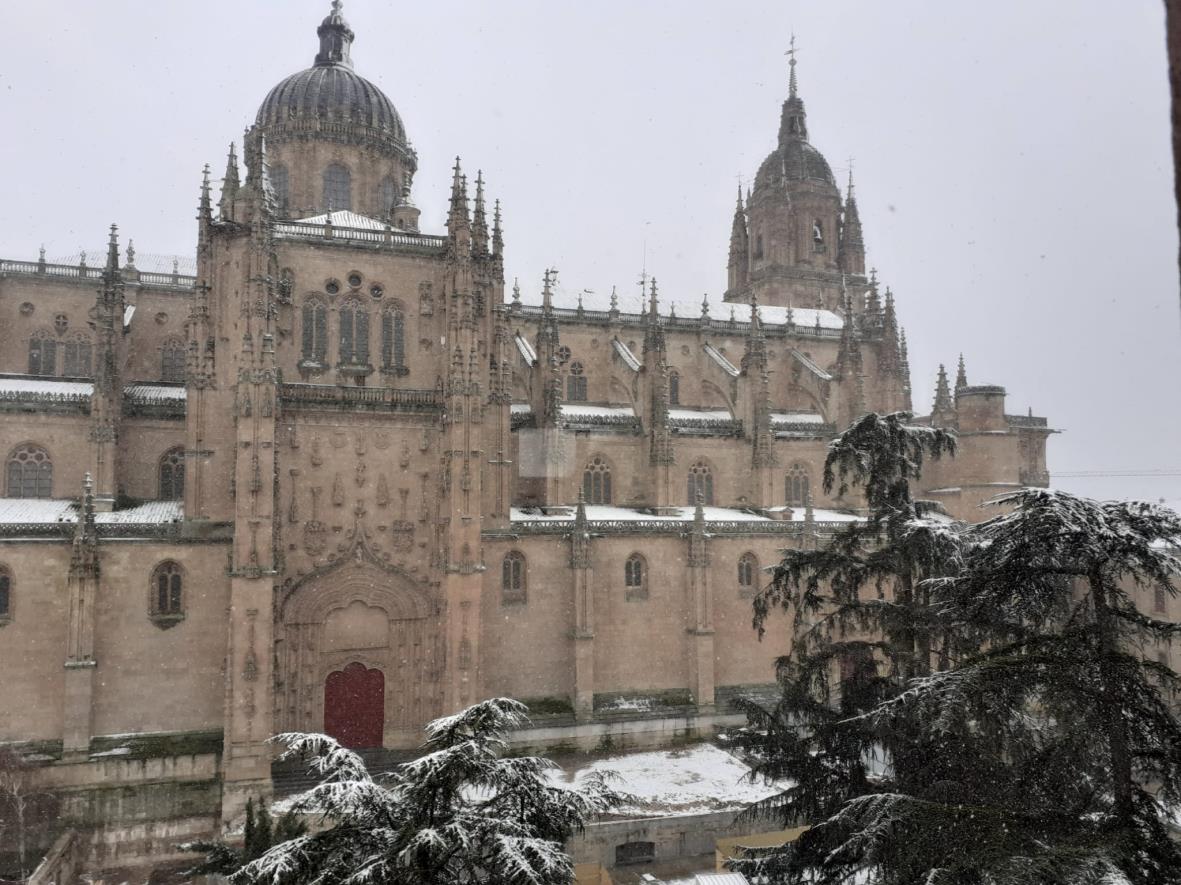
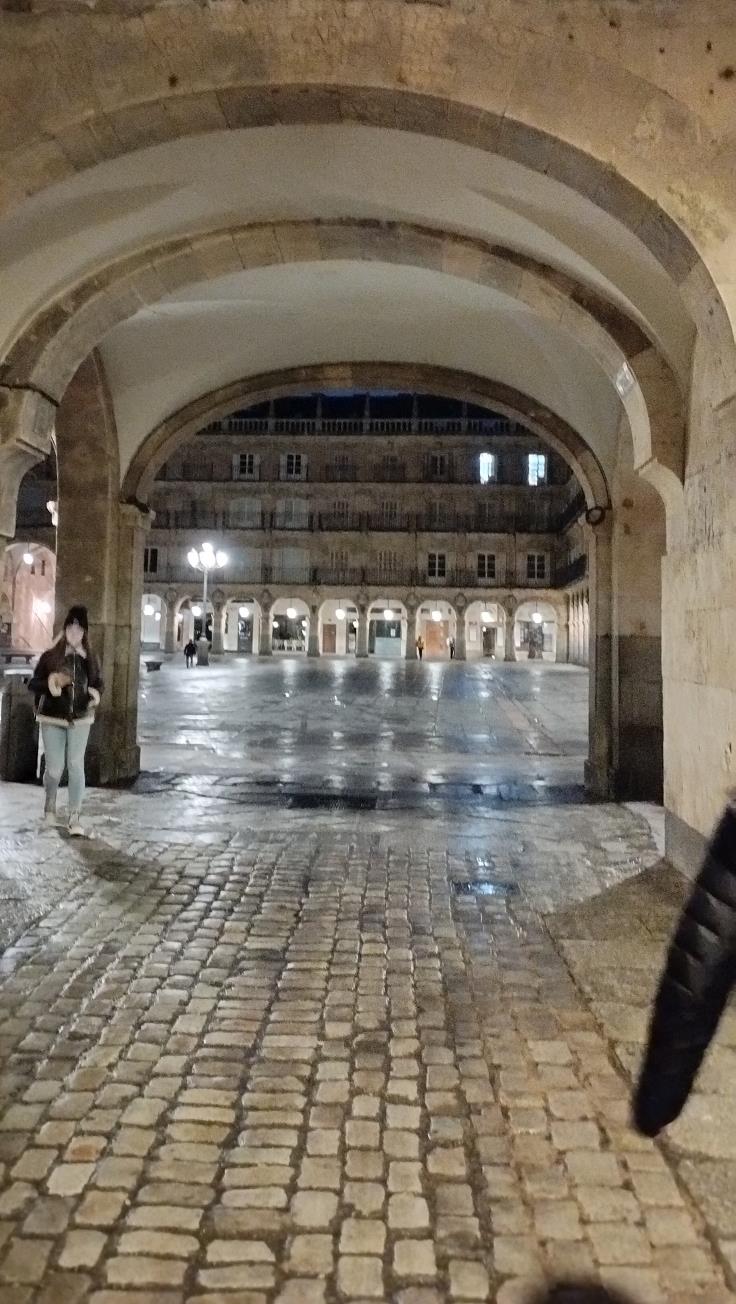
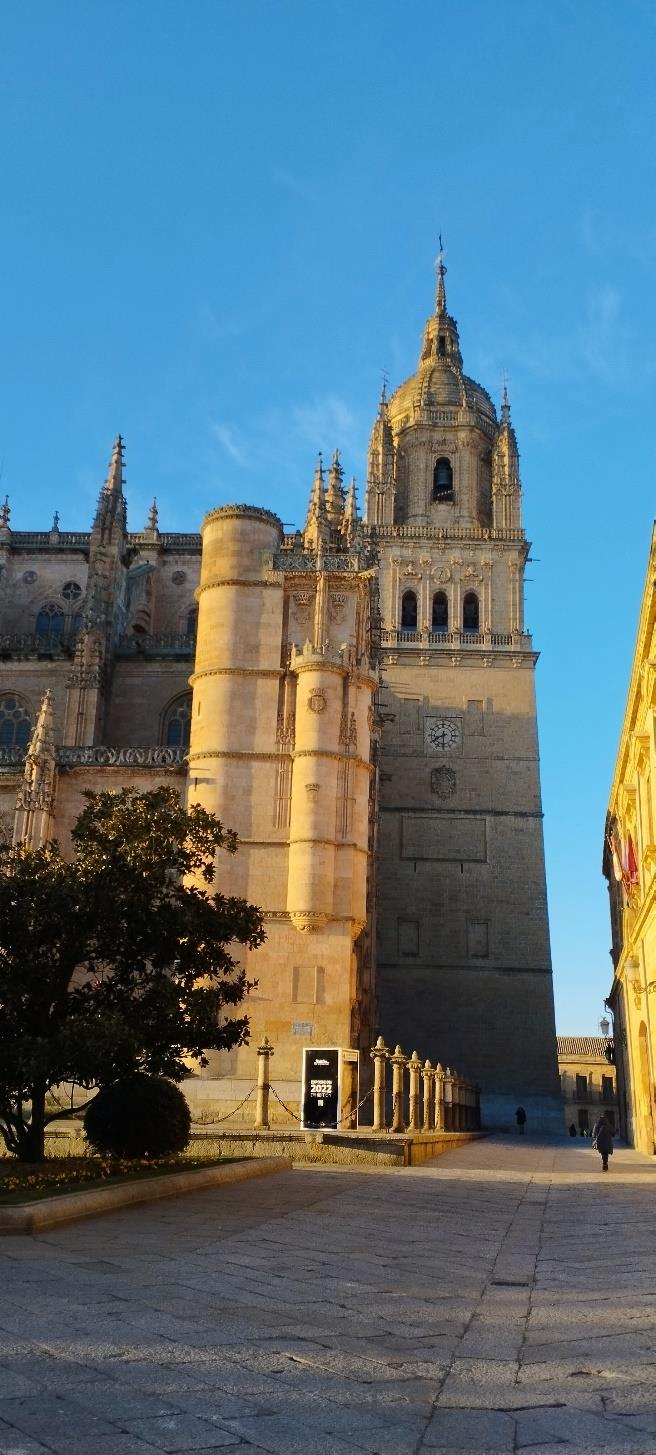
January Activity Report
31January 2023
Global Japan Office Coordinator
KUBO Masako
In January, the exam period.
Between the first semester classes and exams, between exams and the second semester classes. There used to be a week’s leeway between each. During that week, there were make-up classes, exam reviews, and, for the faculty, a grading period, so people were calm and worked well despite the busy schedule. This time, however, there wasn’t that leeway, and everything started with the examinations after the break, followed by the sudden start of the second semester classes, making it a very busy month.
For the Spanish people, there are a lot going on during the winter vacation, with Christmas, New Year's, Epiphany, and so on. If they celebrate Christmas Eve, New Year’s Eve, and Epiphany Eve, it will be at least six days of family gatherings, and I imagine that the examinations that come after such days spent with relatives must be very tough for students. When I ask students about this period, they all answer aloud, "I'm studying for exams," as if it were a set phrase. Now that I think about it, except for the holidays mentioned above, some libraries are open 24 hours a day, even during winter break. And the study rooms on campus and in the dormitories are almost always filled to capacity when they open. I guess that students must feel 120% satisfied studying the most intensively whether they did well on the exams or not.
Well, December was rainy and windy, but January was much colder, with thick fog or below zero temperature with frost, and a flicker of snow, and the cold mornings and evenings finally reminded me of "winter in Salamanca". (Photo1)
Some International students who studied in Salamanca for the first semester went back to their home country, and students who will study here for the second semester has arrived here. Because I have been stayed in Salamanca, I can feel the transition of many people and get a little taste of what they have experienced, and I learn a lot from them.
The second semester at the Faculty of Literature is from the end of January to the middle of May. It will be a period for the fourth-year students to make one last effort on their study. By the end of the classes, they must polish their Japanese language skills so that they have the Japanese language skills appropriate for their academic credentials. The same can be said to the International students, in “ a limited period of time” of studying abroad, I hope that students will be able to grow and develop by cherishing their daily discoveries and interactions with various people!
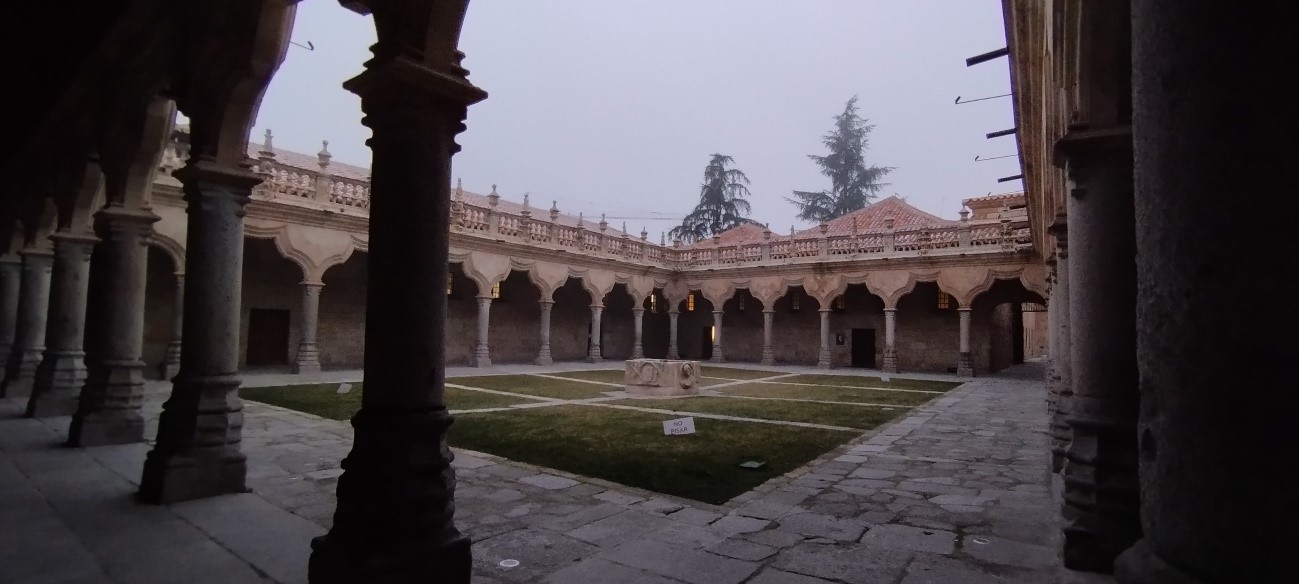
(Photo1) At 8:30 am. Patio Menor with its impressive solemn serenity
December Activity Report
31 December 2022
Global Japan Office Coordinator
KUBO Masako
Rain, rain, rain. I have never seen such continuous rain in December. I carried an umbrella almost every day, but the wind was often so bad that I couldn't even open it. Spanish people are not afraid of getting a little wet, and they usually wear hats or coats with hoods rather than carrying umbrellas. As expected, the rain this month has been quite heavy, and although the percentage of people carrying umbrellas has increased, some people still get wet even in the morning. It is common for the weather forecast to be incorrect or for the weather to change suddenly.
The classes of the first semester in the university, which started in September, will end this month, and only examinations remain. Having the consecutive holidays at the beginning of December and the Christmas holidays starting on the 23rd, I would like to say all heartedly classes are over, and vacations are beginning. However, since I have exams of subjects shifted forward from January, the pressure to submit various assignments before the deadline seems contrary to the streets' Christmas lights. (Photos 1 and 2) How did the wave of the last spurt of classes that fell on the Japanese exchange students look like? Furthermore, the always rainy, cloudy, or foggy lonely weather outside, and finally windy, with the cold hits hard, makes it necessary to have a certain amount of motivation and willpower to go to the university. (Photo 3)
Even so, we were able to hold three language exchange meetings during December. The members who come are usually the same, but there is no day in which no one stops coming, whether it is the Japanese or the Spanish side. No matter who I talk to, the conversation never stops, and it is always enjoyable. Why is it that the conversation is so pleasant? This month, since it was a small group that gathered, we all joined a circle and started talking. Since there are always people who speak a lot and people who don't, I had always believed that pairing people up was the best way to keep the conversation going, but this time I also realized once again the need for group conversations. Whether you speak frequently or are a person of few words, you must follow the conversation, be a good listener, and respond in some way. While listening to others, prepare what you want to say and find the right moment to speak. When you talk, you must convey your message in a way that does not bore the listeners, and that makes them understand. If you don't get your words across well, that's okay; other people will switch topics, and the conversation will continue. It is a pretty speedy development, but it was a special training for us to go with the flow of the conversation, organize our thoughts, and speak.
In addition, some Japanese exchange students offered lectures on shamisen and folk songs, and we invited Japanese language learners to participate. As for the content, of course, the fact that Japanese university students of the same age giving explanations in Spanish must be inspiring, and for Japanese international students themselves, the opportunity to make such presentations became another primary goal of studying abroad, and I wished we could provide more of such opportunities in the future.
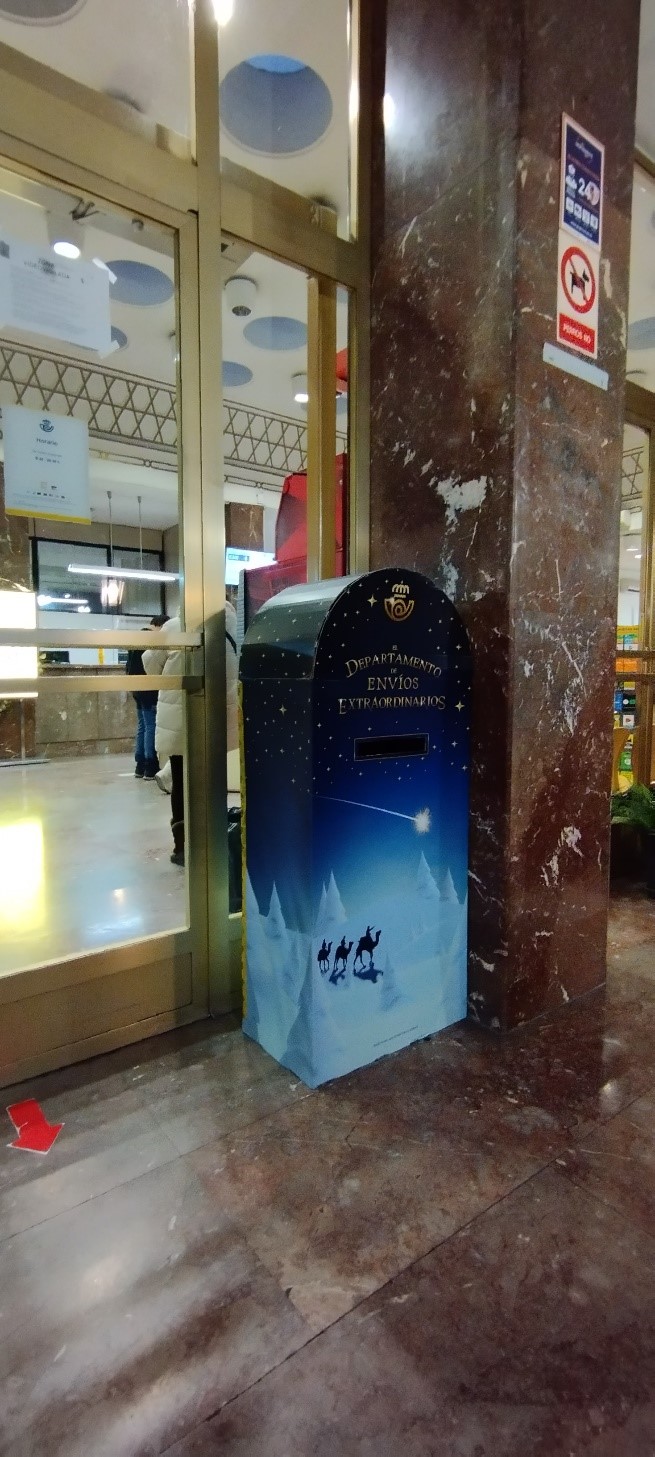
(Photo 1) A letter box in the post office for the Reyes Magos, Three Kings. The participants express their wishes as to what kind of gifts they would like to receive.
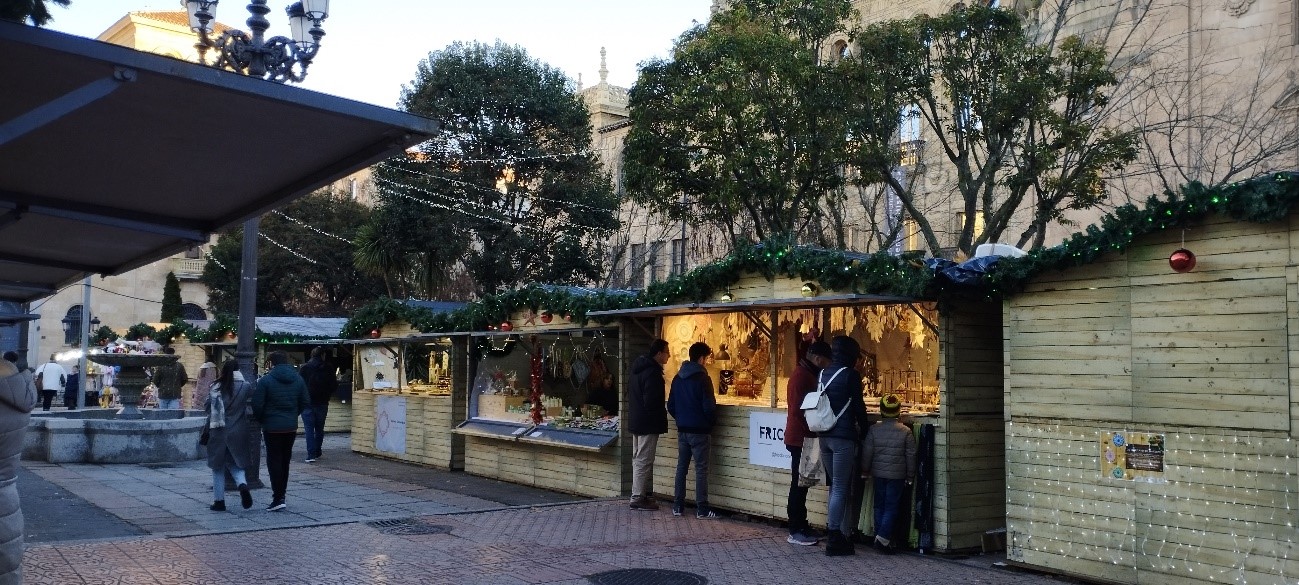
(Photo 2) Salamanca also has a small Christmas market. It is crowded at night.
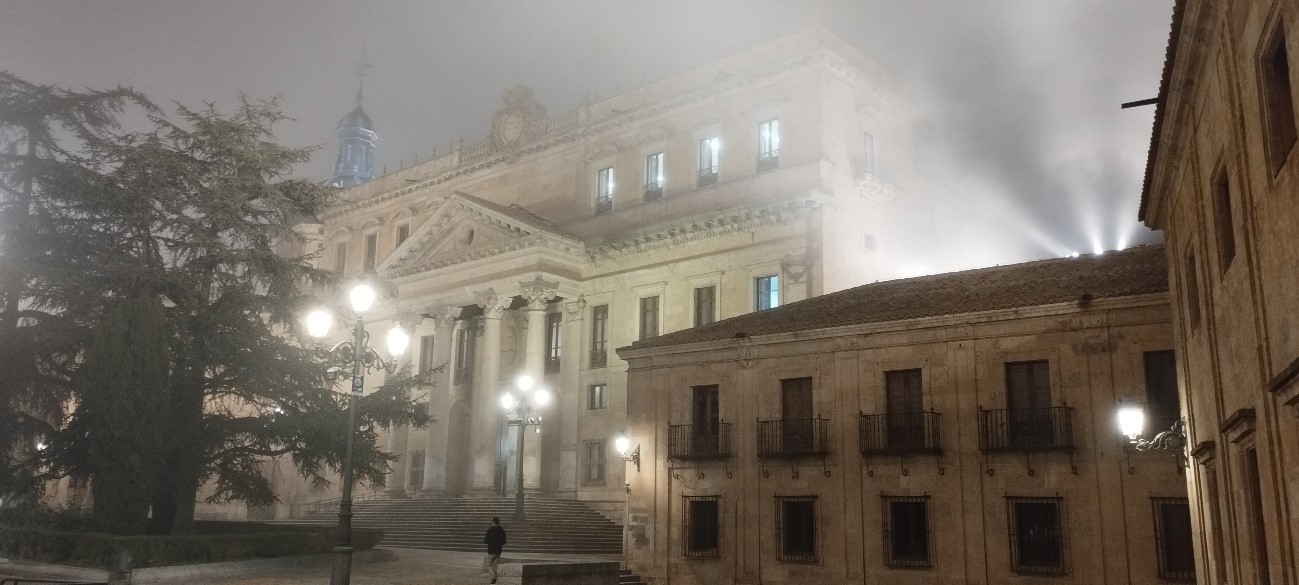
(Photo 3) Palacio de Anaya is beautiful from every angle.
November Activity Report
30 November 2022
Global Japan Office Coordinator
KUBO Masako
The last Saturday in October is the last day of summertime each year, and it was October 29 this year. It gets dark in the evening, as if we had arrived in a completely different world from that Sunday on. As for mornings, Spain always has late dawn, and even after the summertime, I still feel that sunrises are still late . Classes start at 8:00 a.m., which is quite hard, but the science students seem to try to commute to school with their friends. I pass by many of them every morning. Incidentally, most of the humanities classes start at 9:00 or 10:00 a.m., which is also the time for Japanese and Spanish in the international courses. (Photo 1)
After Halloween on October 31 and All Saints' Day (Día de Todos los Santos / All Saints' Day) on November 1, the streets of Salamanca are all set for Christmas. The Christmas lights are ready and waiting for the day when they will be turned on. Stores begin to display Christmas sweets and to be decorated with Christmas ornaments, marking the end of the year.
The fog always begin to fall dense just around this time in the morning and the evening. We notice that the heating has been turned on at the university (Photo 2). The temperature is dropping rapidly, reminding me of the cold in the interior of Spain. Thinking how cold this winter will be, all people start preparing for winter at once. It rains a lot this year, which more makes us feel bitterly cold. The sound of boilers can be heard, and smoke is coming from the chimneys of houses with fireplaces burning. Salt has already been sprinkled to avoid icing, and I also saw news titles like "Winter Autumn”.
This is the most demanding period of study at the university, as lessons are getting fast and with more volume toward the end of the first semester, with test dates in mind. I have heard that some Japanese students try to find someone who seems to be a good note-taker in their undergraduate Spanish classes and ask them to copy their notes, so they try to listen carefully to the teacher during the class. Attending classes, checking notes, and reviewing require many times more attentiveness and efforts than ordinary students. In addition to these undergraduate classes, they expanded the range of activities, and it seems that they are invited to participate in Japanese language classes here and there. Through their participation in the classes, some have made more acquaintances, and are now passing by more familiar faces in the small town of Salamanca. (Photo 3)
In addition to hard classes, lectures and events continue, and there is no time for rest, but I am sure that their study abroad experience will be fulfilling. (Photo 4)
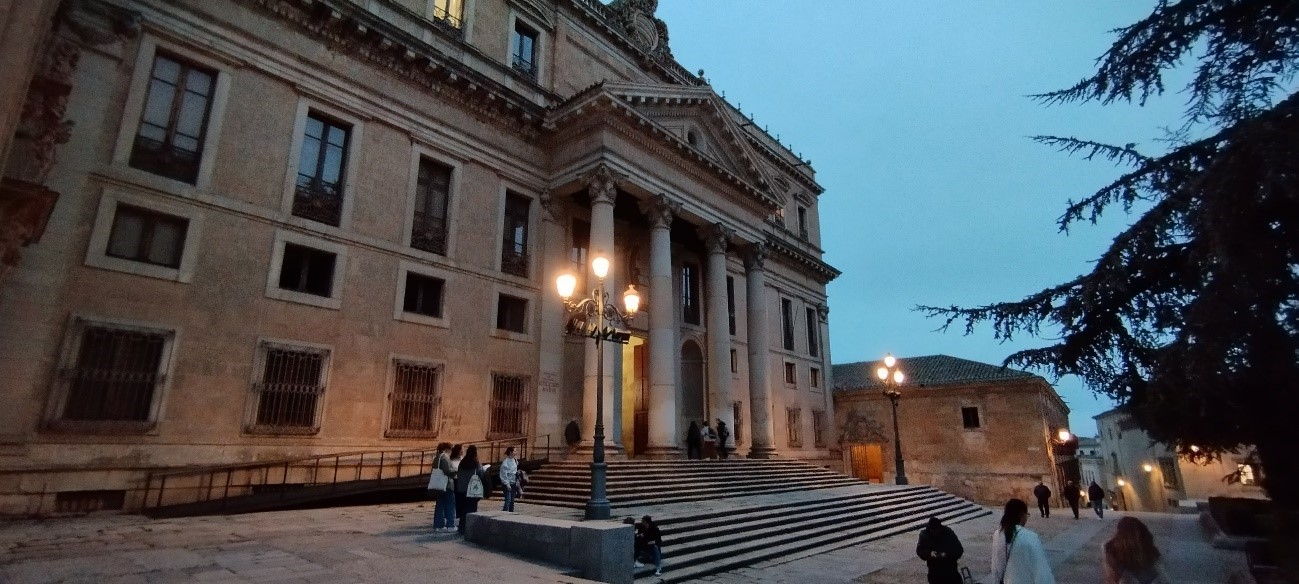
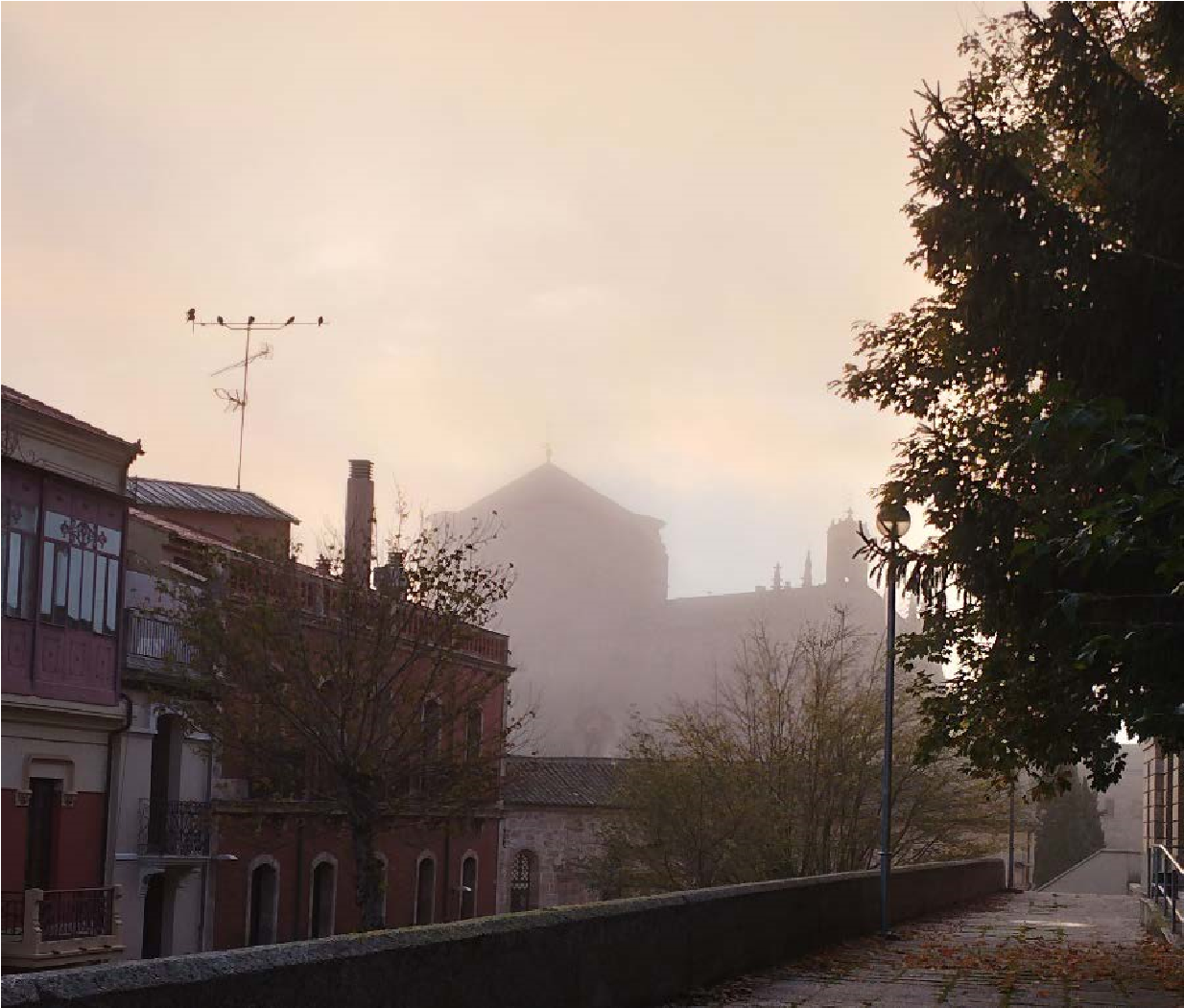
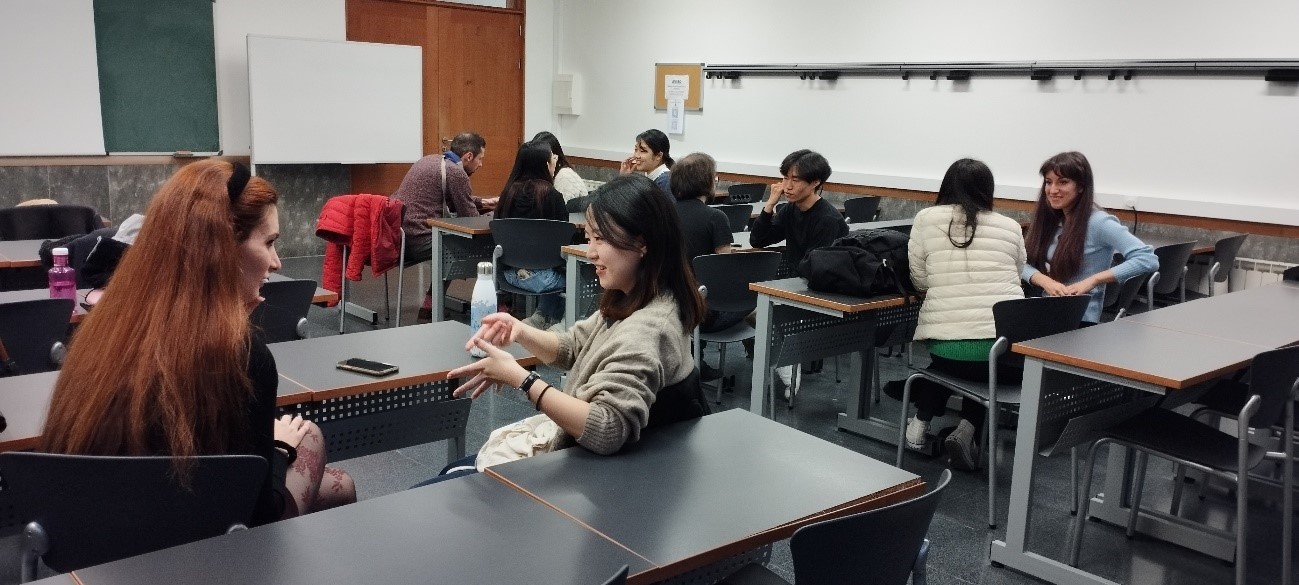
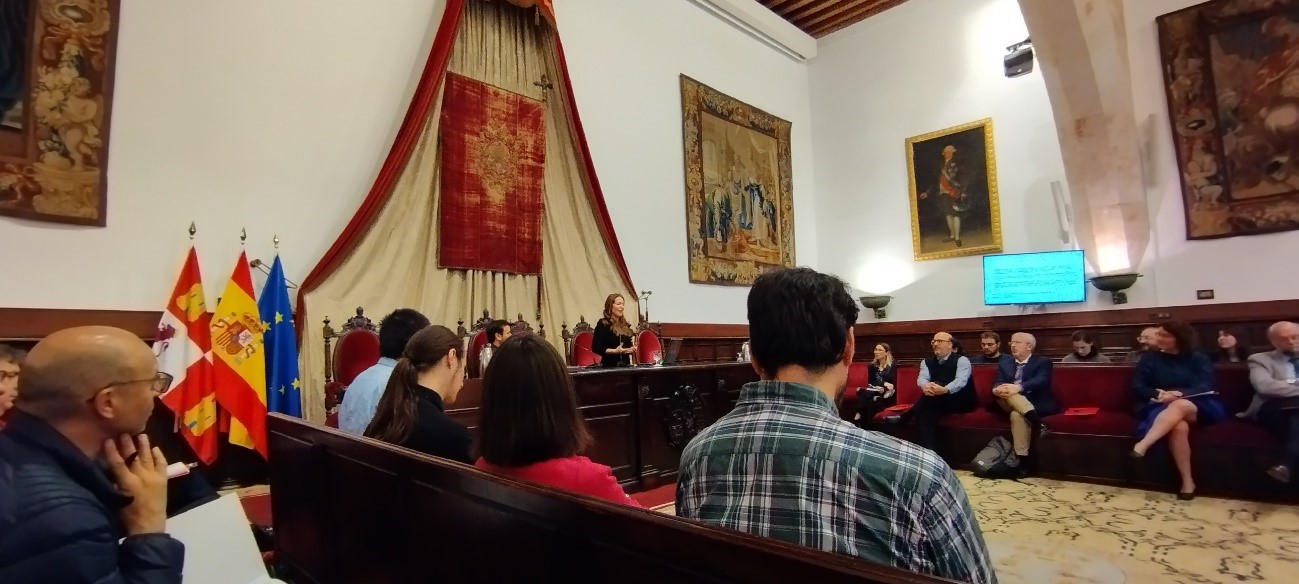
October Activity Report
31 October 2022
Global Japan Office Coordinator
KUBO Masako
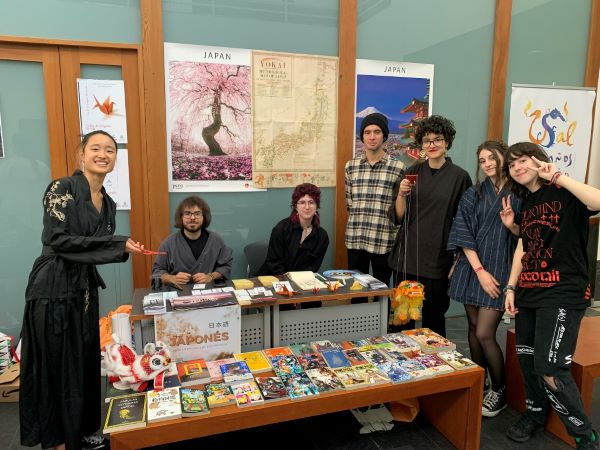
I remember the "Language Day" event as if I had just organized it a few weeks ago. In the previous school year, 2021, this event unfolded in February. The event returned to open in its annual days October this year, so I hurried to attend it soon after the beginning of the new semester. Nevertheless, the third- and fourth-year students majoring in Japanese in the East Asia Bachelor's Program took the lead, bringing books they wanted to introduce or their favorite books, and holding workshops on Kanji and origami, etc. From discussion to execution, the event was done quickly and smoothly. The initiative of the students was remarkable. Although German, Portuguese, Italian, and other languages departments joined the event, Japanese and other Asian languages departments were again prominent. The positive attitude of the students, especially in the Japanese language section, was impressive. (Photo 1)
We have also resumed language exchange meetings this month. Since Japanese students are often away on trips on Fridays and Spanish students are often back home, we have set it for every Thursday afternoon. However, the other social event at another cafe in Salamanca is also held on Thursday. Furthermore, since we also adopted a buddy system this year, we were worried a little that there might not be many people coming this year. But no matter if it rained, was cold, or on the contrary, the weather was too nice and we wanted to go somewhere, an equal amount of Japanese and Spaniards gathered at the university classroom every week. We focus on a particular theme each time, such as hobbies, cooking, or music. At first, they were nervous so they had time to think and to be silent, but they gradually got into the swing of things, and now our lively conversation echoes around the classroom. (Photo 2)
By the way, from October 26 to 28, a conference on Spanish Japanese Studies was held at the Faculty of Literature. There were participants not only from Spain, but also from Japan and Latin America. Among the presenters were graduates of the Bachelor's Program of the University of Salamanca, we learned that they are active in many different areas. For the Japanese language students who participated, the three days were a fulfilling opportunity to learn about what kind of Japanese studies are being conducted. The days made me realize that Japanese studies in Spain are gradually becoming established. I participated in a workshop to make "pelota de semilla (clay dumplings)" organized by the Oficina Verde - Green Office of the University of Salamanca on October 24. This idea was born in Japan. Japanese language learners also participated in the workshop and chatted with each other in Japanese while making the dumplings. As a matter of fact, this day is designated as "Día Internacional contra el Cambio Climático - International Day against Climate Change. Upon further research, it seems that the Spanish government is pushing for this, although there is no approval by the United Nations yet. I took a walk along the banks of the Río Tormes - Tormes River, which flows through Salamanca (Photo 6) on the 29th after the conference. People often know little of what is happening under their very noses. I encourage you all to look for little-known hot spots!
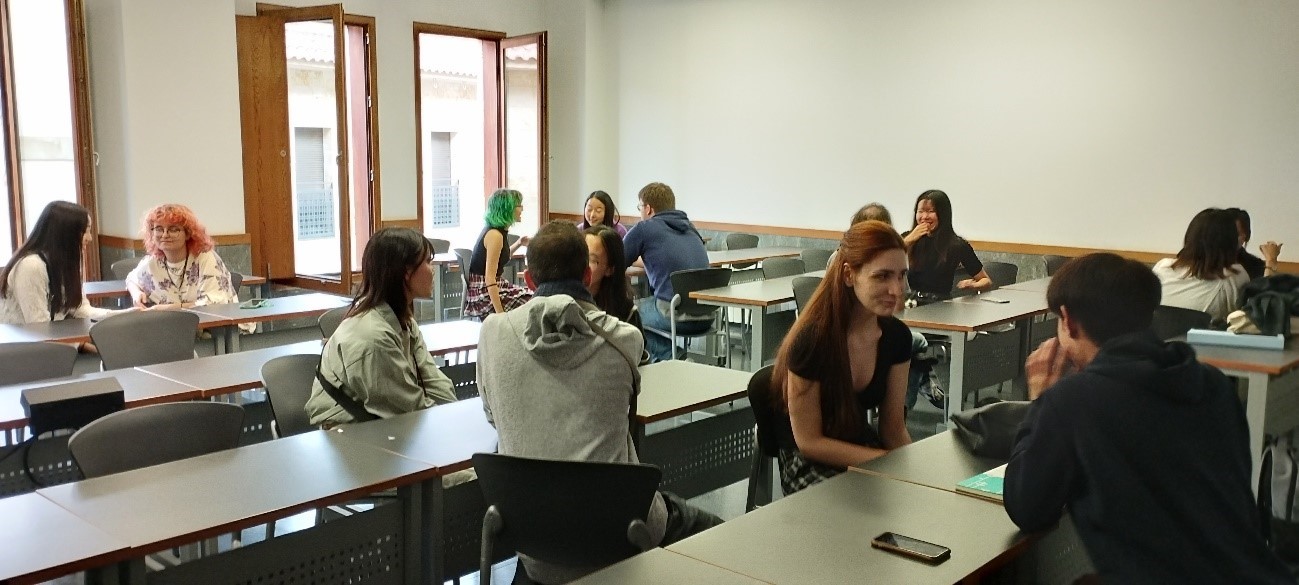
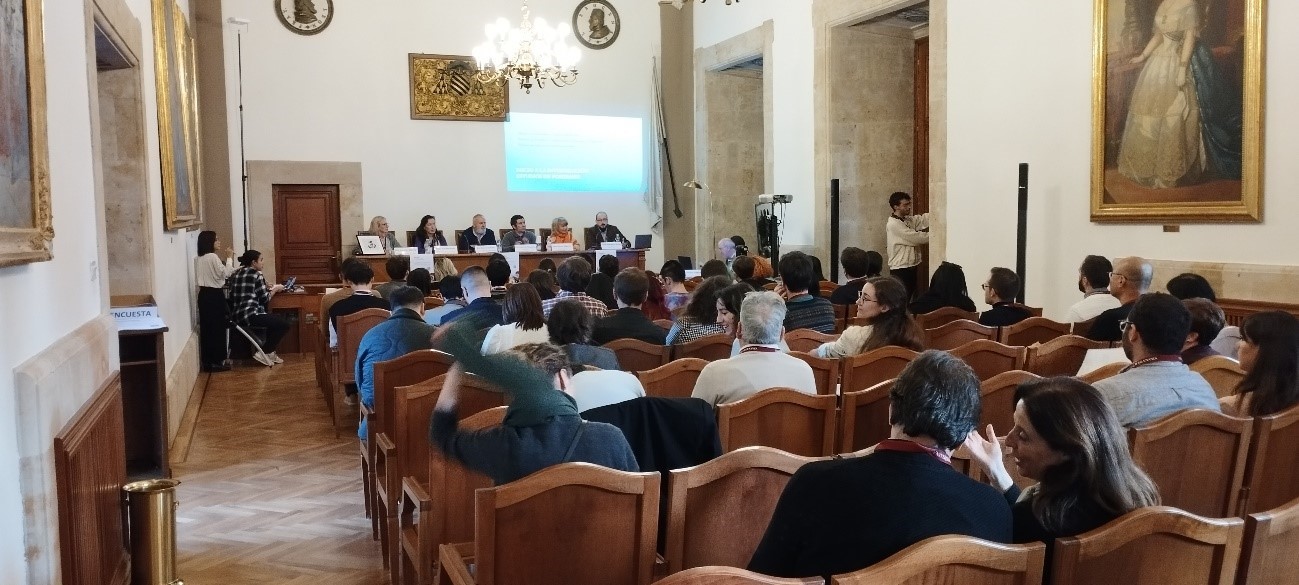
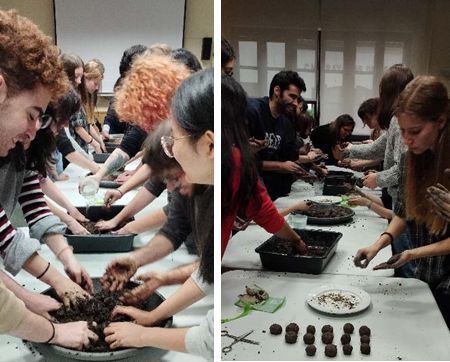
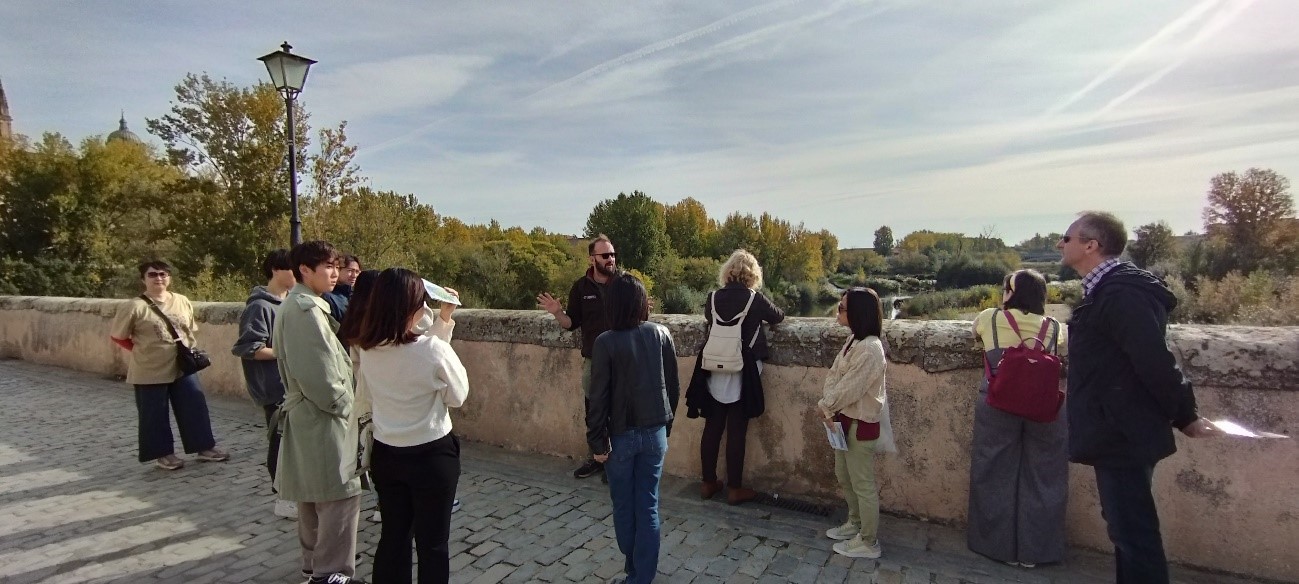
September Activity Report
30 September 2022
Global Japan Office Coordinator
KUBO Masako
The temperature difference between morning and evening is gradually increasing at the month of September. The City of Salamanca has a holiday on September 8, and the summer vacation mood is not yet over yet, as there are many stalls and street concerts around the holiday. The Faculty of Literature started classes a little later this year, on the 19th, but until then, the school is only open for half a day and closes at lunch time, 15:00. I always see a lot of tourists around the Cathedral at the Literature Department, especially we often see guides walking with group tourists, which reminds me of the charms of Salamanca, wondering, "Oh, this is also a tourist spot.” After a month-long summer vacation, the university began the academic year 2022. Ceremonies and briefings are being held one after another at various locations: a solemn opening ceremony for the entire university, opening ceremonies for each department, welcome parties in each program, orientation for new students and international students, and so on. The opening ceremony of the Department of Literature was held in a theater owned by the department, and all 400 seats were filled in no time (Photos 1 and 2)
The number of international students has increased dramatically this year, with 29 students from Japan coming to the University of Salamanca as exchange students. Including privately financed students, the number has increased even more, and the city seems to have almost regained its former vigor. Now that the restrictions for Covid-19 have been settled, some students who have started studying in Japan attend language courses or public language schools in order to keep up with their undergraduate coursework. In Japan, many of our students do not major in Spanish. When I was a student, I majored in languages and studied nothing else, so when I met someone who studied abroad in addition to his/her major, I couldn't help but think how admirable it is.
A Spanish student, who had just returned from Japan, suggested to form a buddy group. He said that he had experienced many difficulties when he went to Japan and thought that it would be helpful if there was a system that allows students to help each other. We immediately contacted Japanese exchange students and Japanese learning students in grades 3 and 4, and almost everyone showed up, with as many as 24 pairs being formed (Photo 3).
They have been in Salamanca for almost a month now, and we hope that their Spanish buddies will help them not only to start living in a new place, but also to make Spanish friends and get more and more familiar with the city.
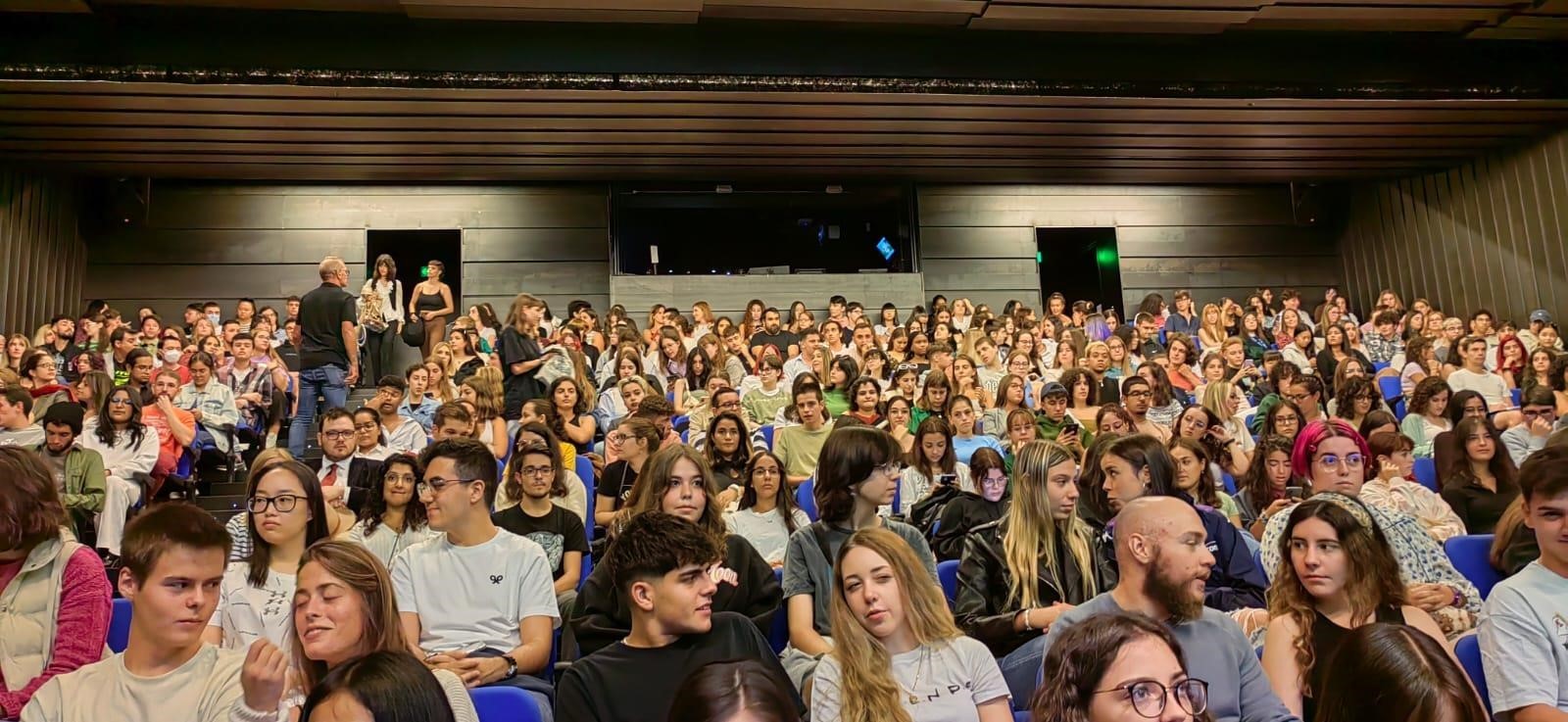
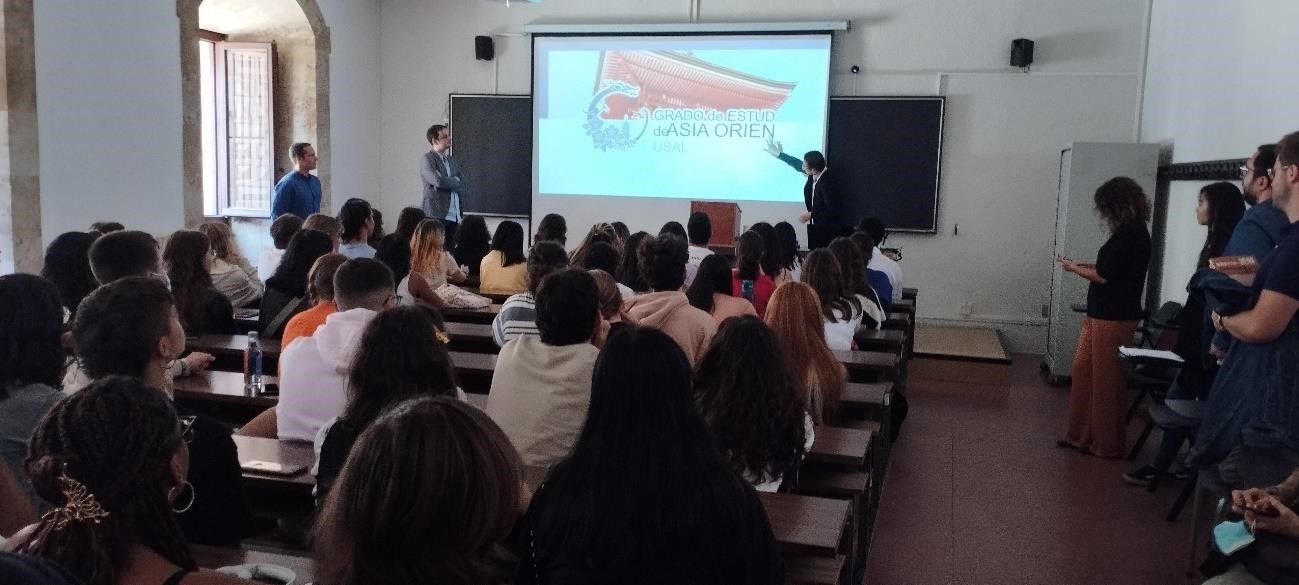
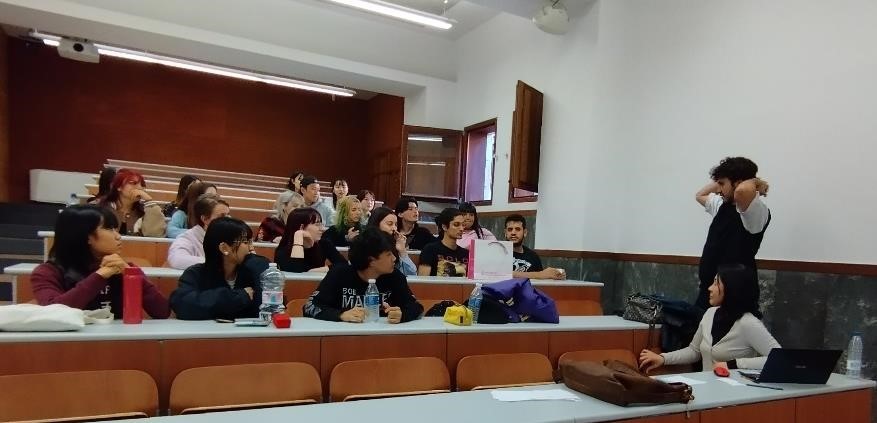
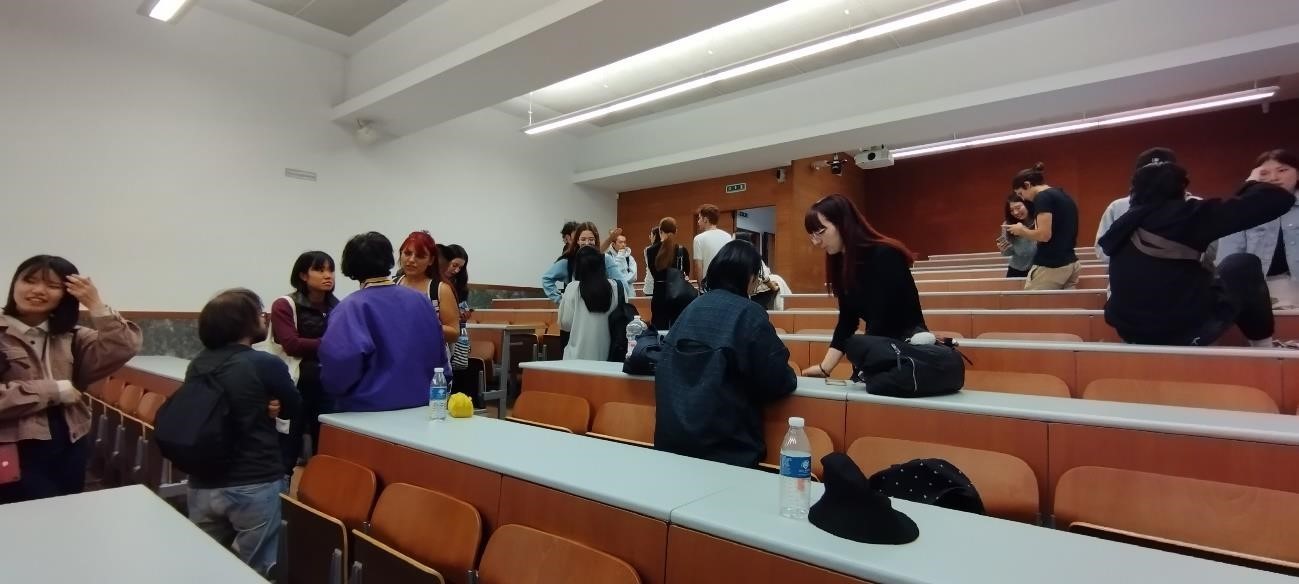
June Activity Report
30 June 2022
Global Japan Office Coordinator
KUBO Masako
Many people get sick due to the large fluctuations in temperature, such as the intense heat of 40°C (104°F), followed by chilly days of about 15°C (59°F). The city of Salamanca celebrates national holidays with fireworks displays, outdoor concerts and other events followed by the opening of the swimming pool and a series of festivals held throughout the village.
For students, this is the most important time of the year in terms of academics, with the main examination in the second semester, followed by the supplementary examinations in the first or second semester, and for those who do not have supplementary examinations, the last spurt of the dissertation. In between, there is the graduation ceremony, the biggest event during the school year, and the days are truly dizzying (Photo #1). The campus of the Department of Literature is right in front of the Cathedral, and since the beginning of June, the number of tourists has increased even more (Photo 2), creating a strange mixture of those who enjoy sightseeing and those who take a break from their studies everywhere. Spurred on by this, we tried to record a video message about environmental protection that we worked on with Japanese students in class in May. Although I can make a 3-minute presentation and submit a 1-minute recording without any problems in daily classes, when I was in front of a camera with other people, it took me an hour trying to prepare not to make any mistakes. I realized that trying this kind of work in different places and with different people would be another step toward improving my Japanese language and related skills (Photo 3).
Japanese students studying in Spain, say, have to take rigorous exams as well as reports, under the same conditions as native speakers. From linguistics and literature to phonology, everyone is doing his/her best in Spanish to cover content that is difficult even in Japanese. In addition, international students are also very busy preparing for their return to Japan.
Life in Salamanca, where they spent almost a year. Things to keep, things to give someone, things to throw away.... They are gathering all kinds of information and making all kinds of plans, weighing their suitcases and thinking of ways to send them by mail, etc. You want to bring back souvenirs and say goodbye to your friends in Salamanca. Packing is not only a matter of weight and choice, but also increasingly a race against time. There are good things and bad things, some people spent their time wishing to go home early, others wishing to stay longer, and there are a thousand different types of people, but anyway, after "studying abroad," I feel that I have gained an experience that is completely incomparable to a year in Japan, leading me to reflect on my life and future prospects.
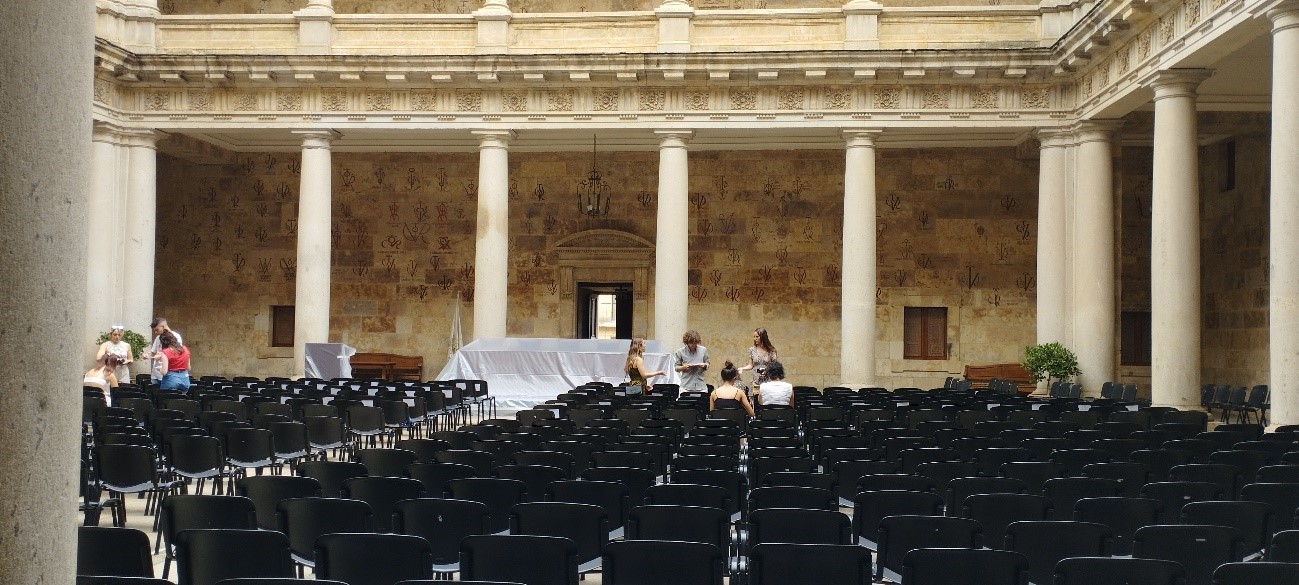
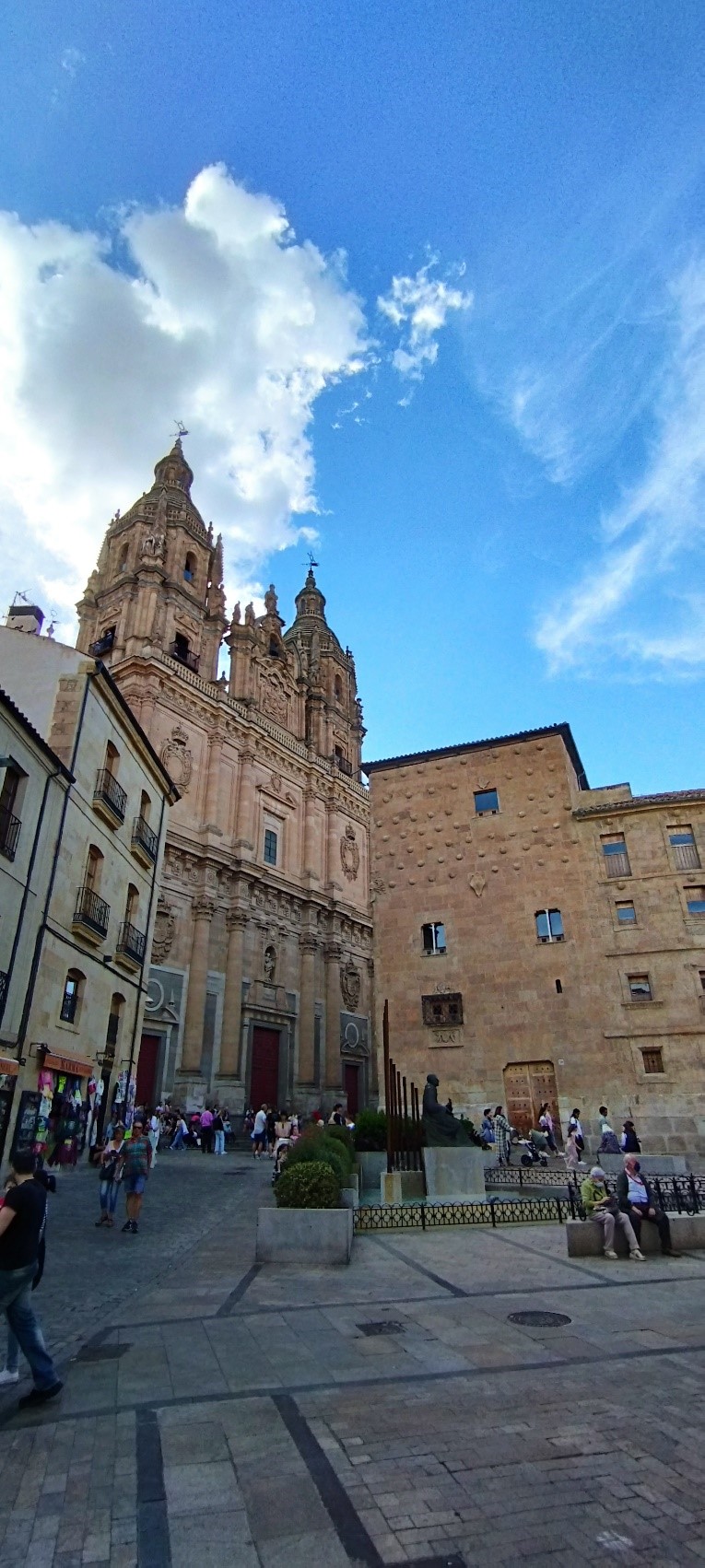
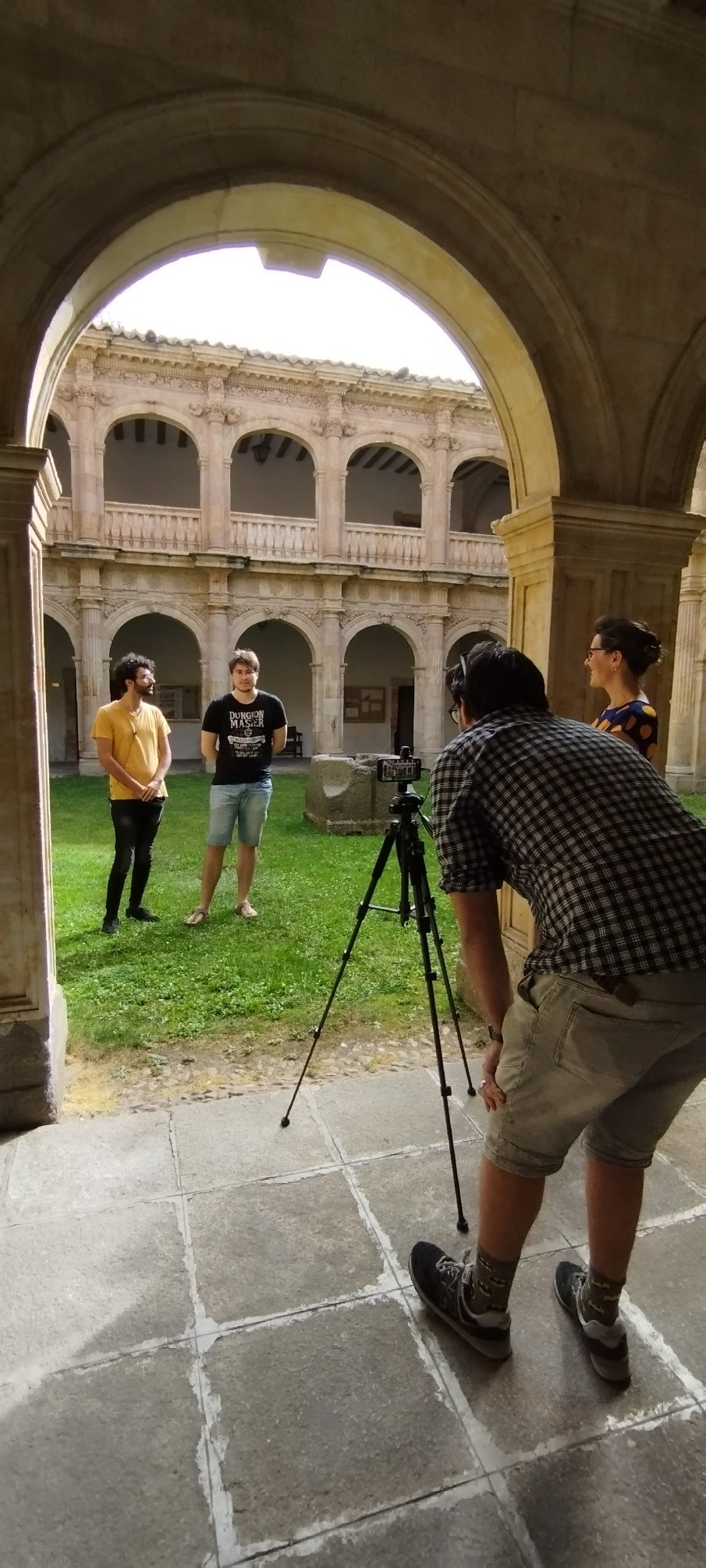
May Activity Report
31 May 2022
Global Japan Office Coordinator
KUBO Masako
May has arrived and the summer days are suddenly followed by summer days. Japanese students also said in unison, "There was no spring. However, in this area, there is a saying, "Don't put your coat away until the 40th of May. Forty days means, in other words, until early June. This is a testament to the characteristic of this area, where the weather can be hot for a long time and then suddenly turn cold. This year, the saying has not been contradicted, and even at the end of May, after a long stretch of hot weather, there were a few days when I needed my winter coat.
In the East Asia Bachelor Program, Japan Week was held in early May (Photos 1-1, 1-2). The program was planned and executed by students. This year, students in each grade participated in the program, which was better than in the past in terms of content and number of events and participation. The most popular activities were tea ceremony, games in street stands of Ennichi (Japanese festival), and calligraphy. The tea ceremony and calligraphy, in particular, are often held at other cultural events, but sometimes the number of participants is limited, so the students were glad to be able to experience them this time. A post-event survey revealed that some students were unable to participate due to conflicts with other classes, so we will reconsider the event schedule next year.
We also had an online session with students who finally went to Japan to study in April, where they talked about their current situation in Japan, their arrival, classes, and life in Japan (Photo 2). This was an effective opportunity to exchange information, as students who were interested in studying in Japan could ask questions and compare various study abroad programs at once. I cannot forget the presence of students studying abroad online in Salamanca. Taking classes in the middle of the night is a lot of hard work, but they seem to be filled with a sense of fulfillment. May started with a lot of events, but after that, it was the last part of the month before classes ended. After the classes are over, the exam period will begin in a short time. The fourth-year students have their graduation theses and the graduation ceremony just around the corner, and everyone is making steady progress toward their own goals. Although the language exchange meeting has ended with the end of classes, it seems that the members who attended the meeting have somehow moved to a café after the meeting. Now they meet up directly at the café at the same time and continue to communicate with each other. Both Japanese and Spanish learners commented that they improve their conversational skills because of this event. I remembered that even students who are quiet and do not talk much were trying their best to speak, which made me realize that language learning requires not only classes but also various activities.
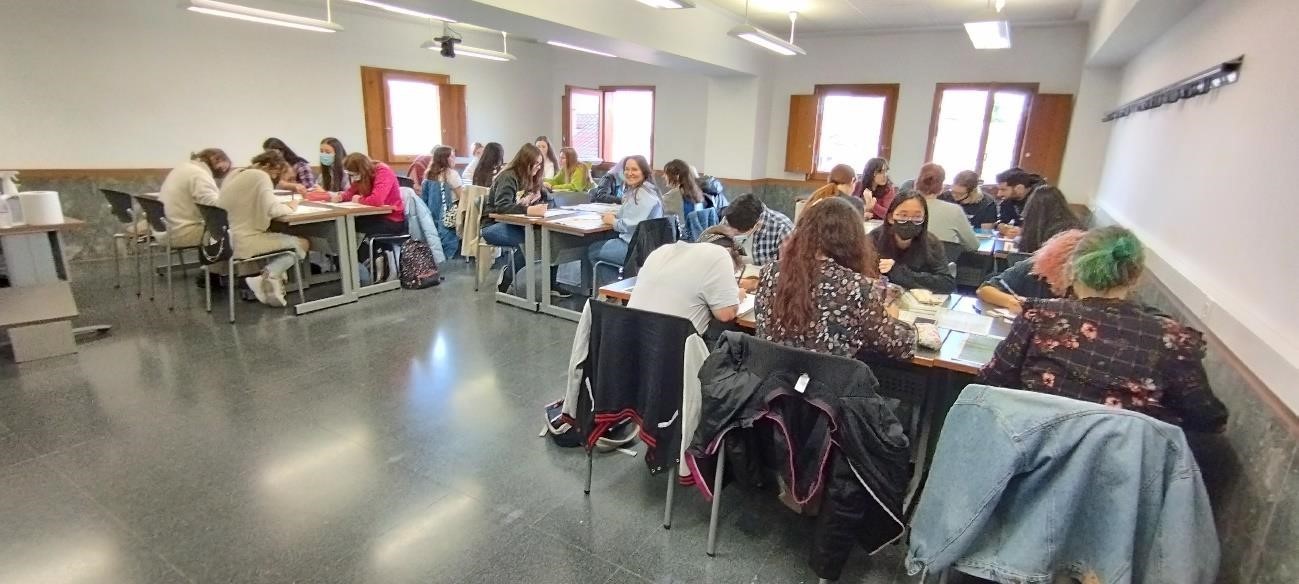
1-1. The calligraphy event was full. The kanji they always study seem to be something completely different.
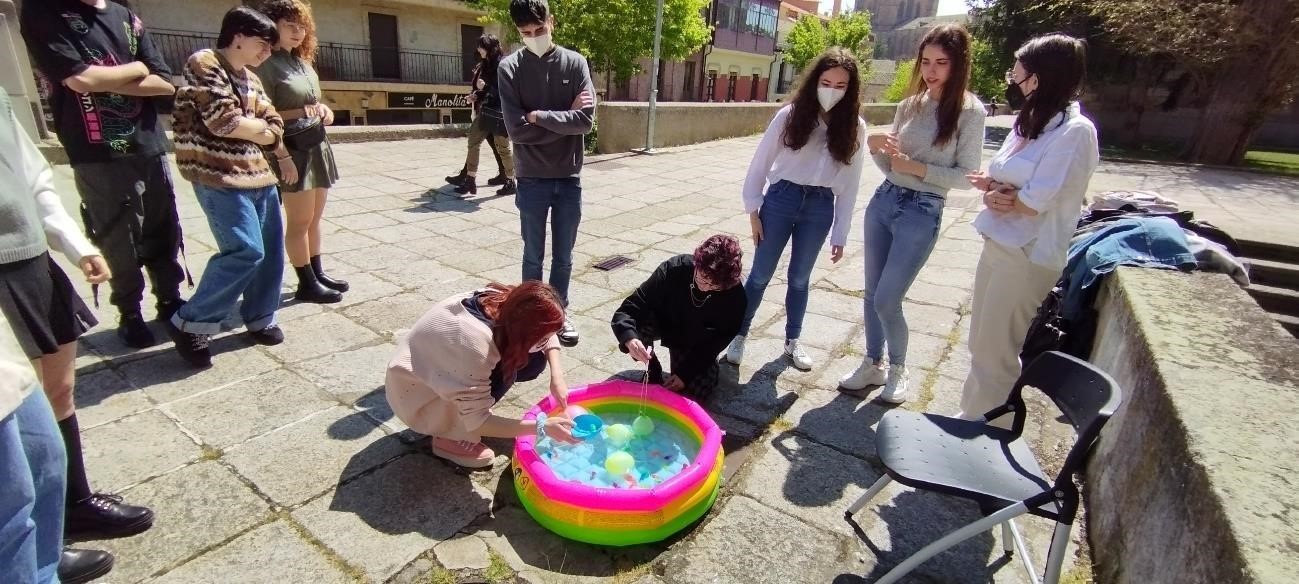
1-2. Poi for goldfish scooping were imported from Japan. Students tried not once, but many times.
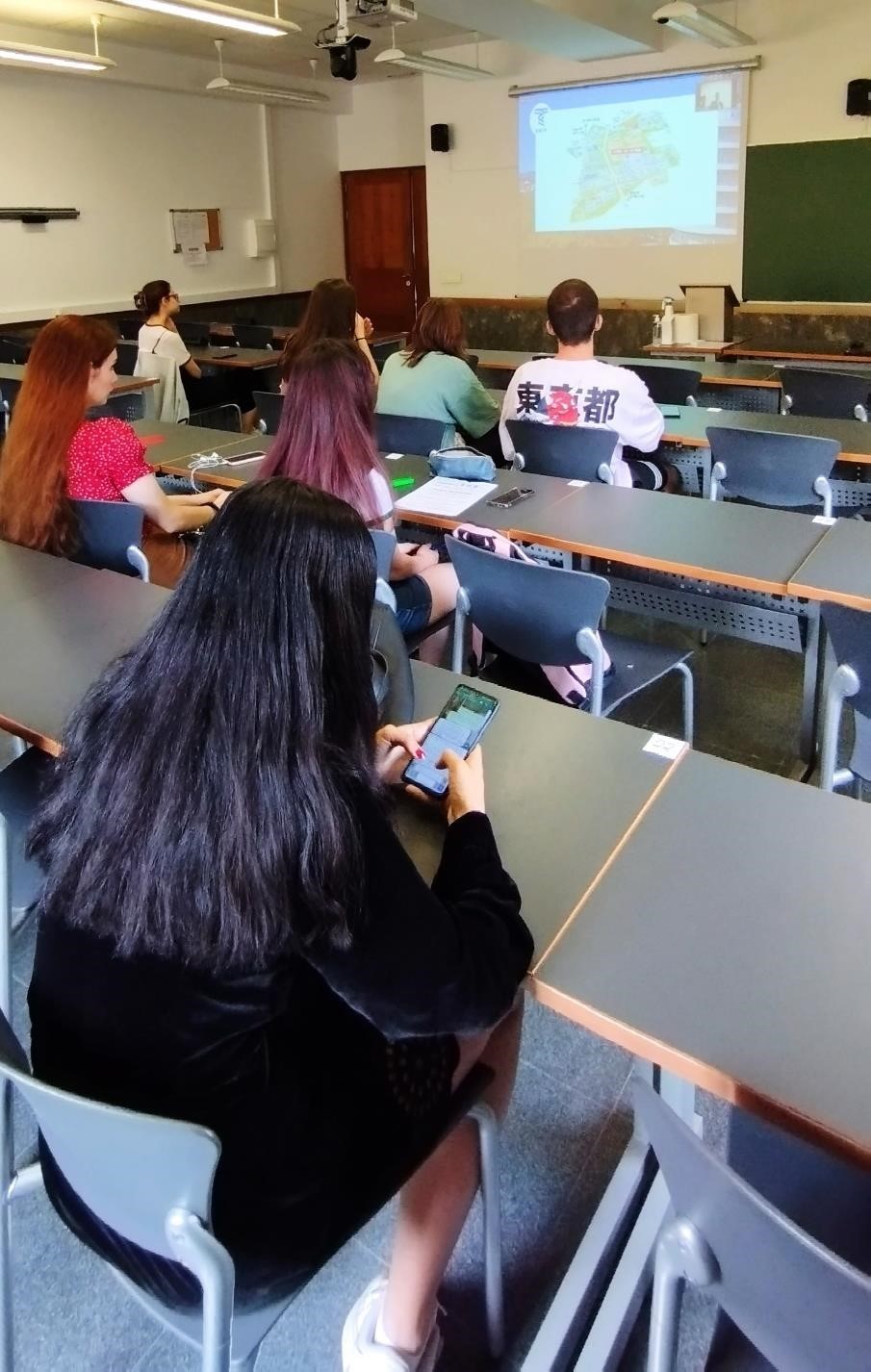
April Activity Report
5 May 2022
Global Japan Office Coordinator
KUBO Masako
Semana Santa, Holy Week, has come. Finally this year, it is celebrated in all over Spain. In Salamanca, a procession of palaces and floats called "paso" paraded through the city with a brass band. From Palm Sunday, the day of Jesus Christ's entry into Jerusalem, to the Sunday of his resurrection, a paso with a scene based on the Bible is presented for each day of the week. Various pasos follow various routes from different churches around the city, which can lead to temporary roadblocks and crowds of people stuck in the streets. The celebration was the first time in three years, so there were a lot more people than before the pandemic, and I felt a sense of freedom from the two-year travel restrictions. They overturned the custom of being closed on weekends and holidays and gave up the holidays so that every store was open until late. I had never seen a late night procession before, except on TV, but this year I unexpectedly encountered a paso on Good Friday Viernes Santo. So I realized that Good Friday is the most important day of Semana Santa.
It is such an important event for the Catholic culture and the holiday continues. The university is also having a major 11-day holiday, and most students go back to their hometown. International students enjoy traveling in Salamanca, but at the same time, they are also preparing for assignments and exams, and the holiday seems to have passed very quickly.
As for Covid-19, the situation is not getting better and it seems to have grown tired of expecting under control or not, but it is unthinkable not so long ago that people who tested positive, as well as their close contacts, no longer have to quarantine. People's image has also changed from a “threatening Covid-19” to a “kind of cold," and they think that most people get it. While many people are of the opinion that this is a slightly premature decision, the government's requirement to wear masks indoors has been removed from the 20th, immediately after the holidays, which symbolizes a free society that leaves the responsibility to one's own.
The language exchange meetings are getting back on track, and although there are only a few students, they seemed having a fulfilling time. This month's theme was "Semana Santa and Golden Week" and "Names. The discussion about travel during Semana Santa and how to spend the Golden Week in Japan revealed the differences in the way people perceive the major holidays. In addition, we talked about the meaning of our own names. Not only in Japanese, but also in Spanish, names have a deep meaning, and there was a lot of new discovery by discussing who gave each name and why. I had known Spanish has nicknames, but I realized I didn't know a lot about my culture, so it was a very productive meeting both for Spanish and Japanese.
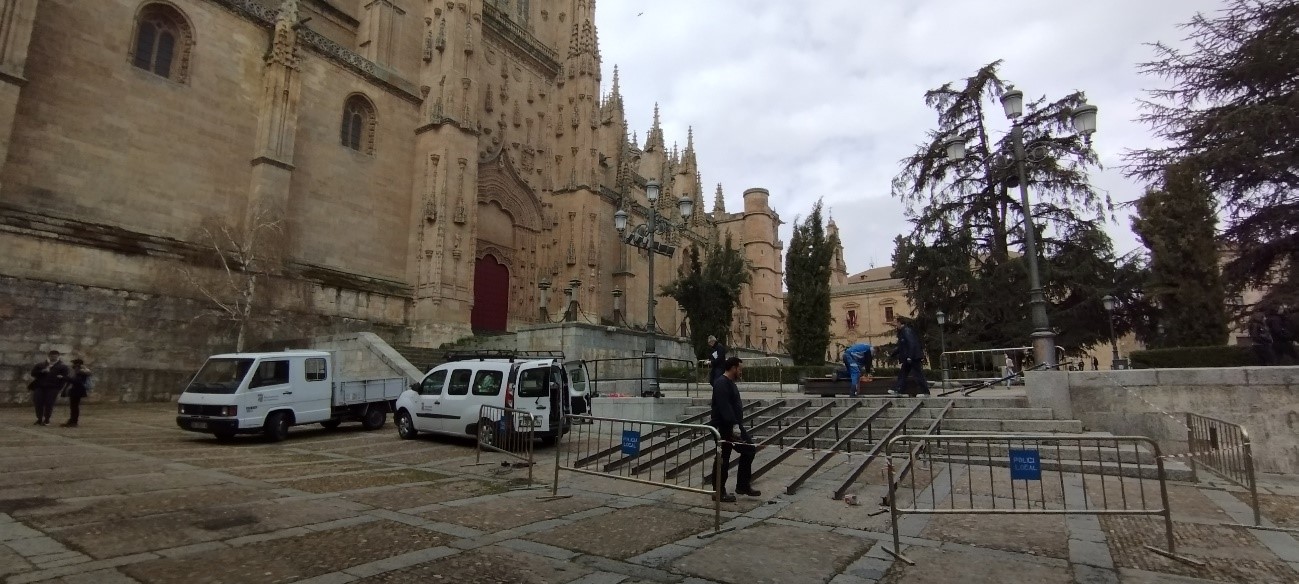
Large ramps on stairs for Semana Santa pasos.
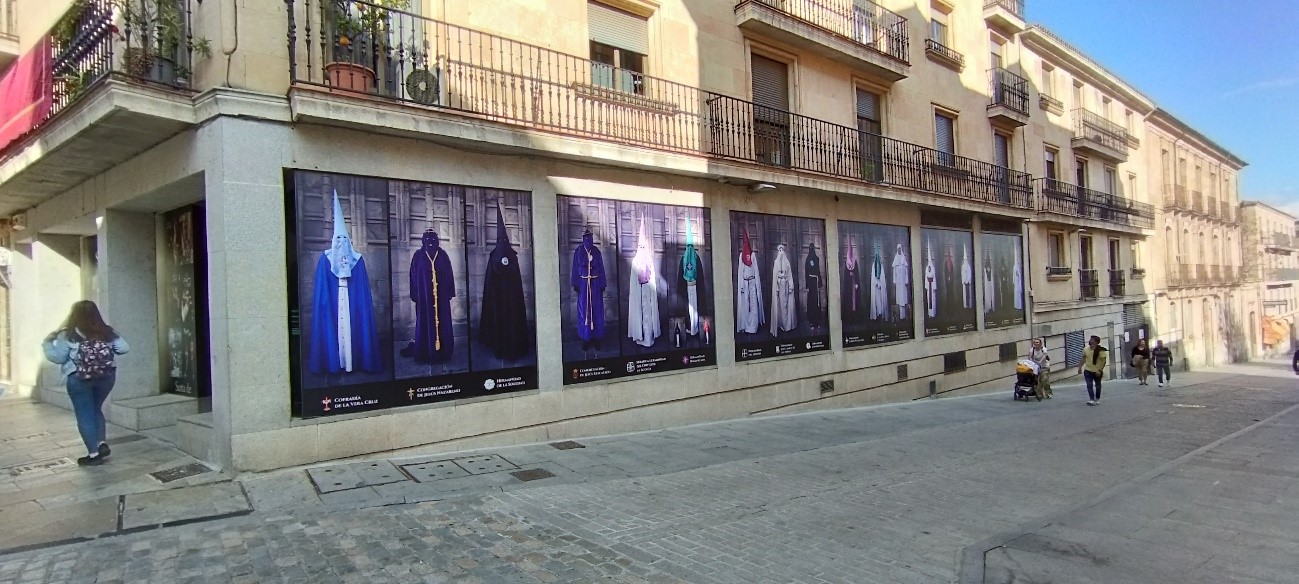
Newly this year, photos of each congregational group were displayed on the wall.
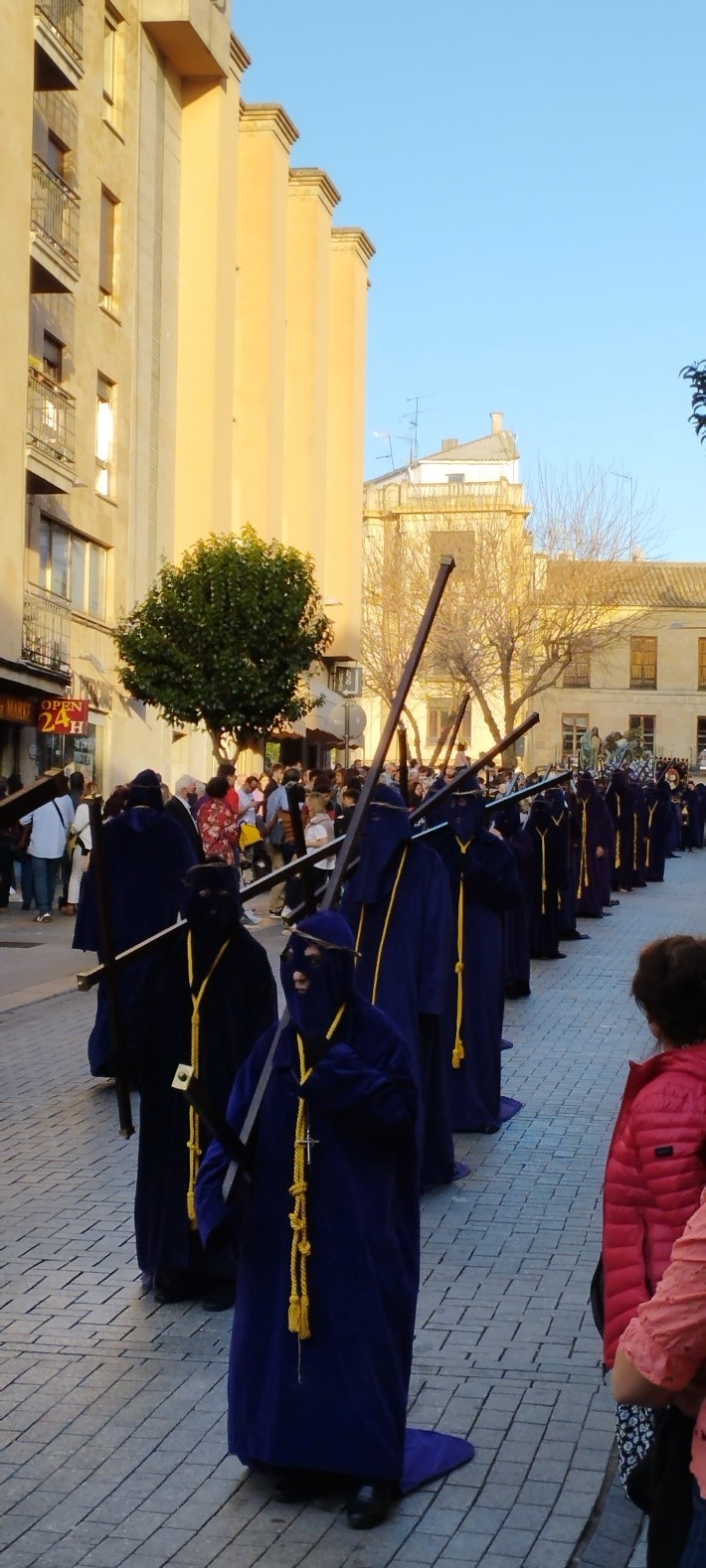
A procession of people takes hours on the route, stopping and going slowly.
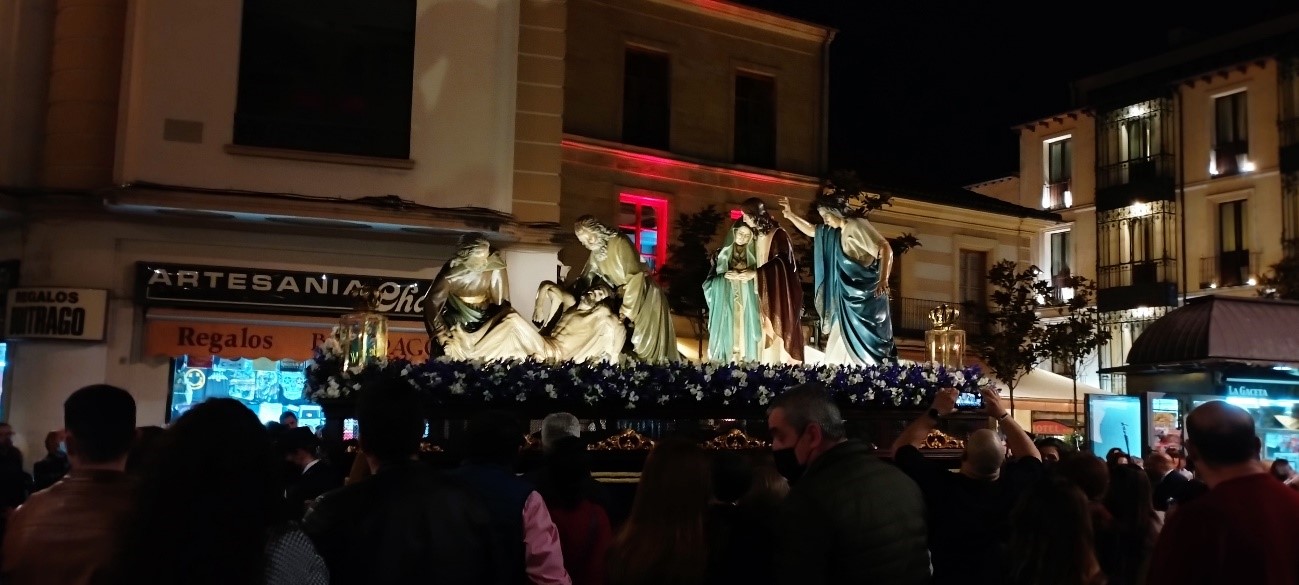
Paso representing the scene of Jesus Christ being taken down from the cross.
